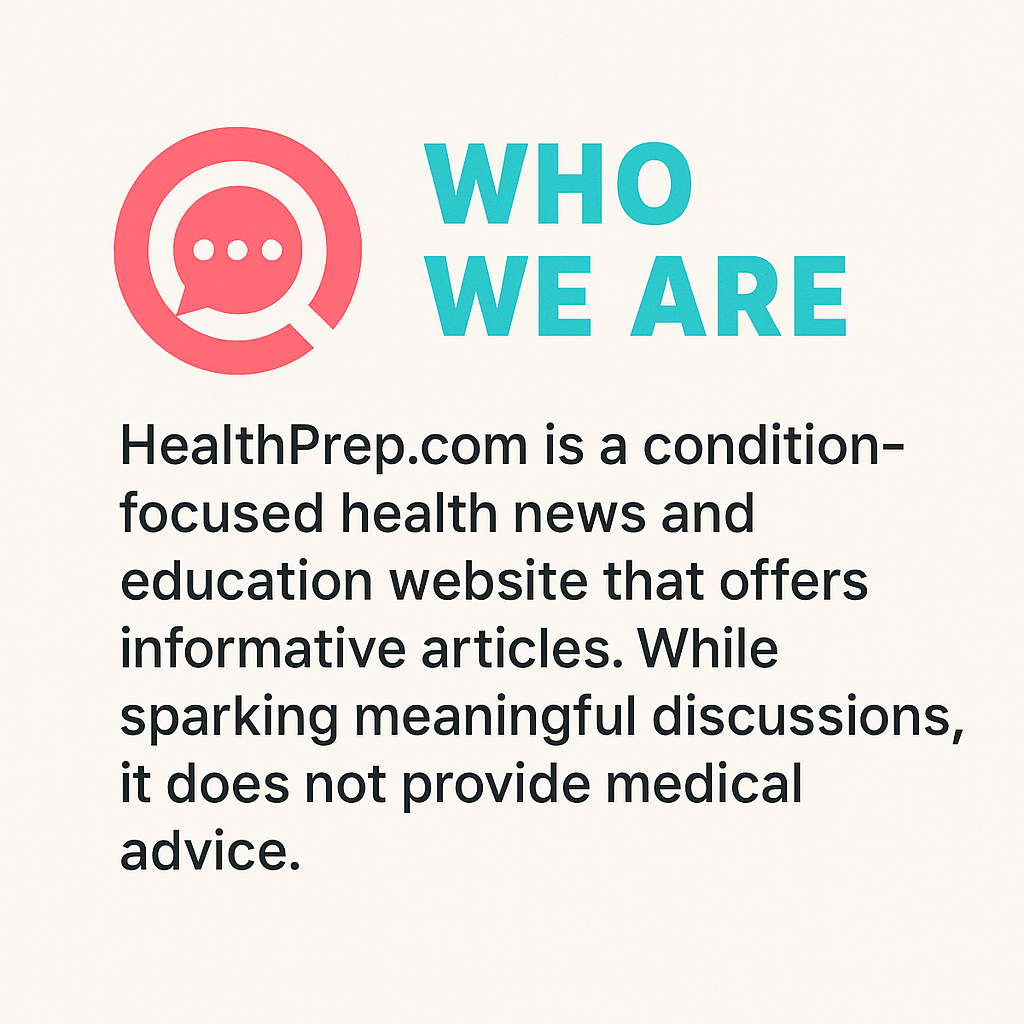45 Surprisingly High-Sodium Foods You're Eating Without Realizing
Think your diet is fairly low in salt? You might be in for a shock. While our bodies need some sodium, most of us consume far too much, often hidden in foods we eat every day, silently increasing risks for high blood pressure, heart disease, and stroke. Forget blaming the salt shaker – the real culprits frequently lurk where you least expect them, even in foods marketed as "healthy"! That’s precisely why we’ve significantly expanded our eye-opening list to reveal 45 surprisingly high-sodium foods flying under the radar. From common breakfast items and deli meats to canned soups, sauces, and even some sweet treats, these stealthy sodium sources can quickly sabotage your health goals. Ready to unmask the hidden salt in your pantry and fridge? Let's expose these surprising foods and empower you to make smarter, healthier choices without sacrificing flavor.
1. Breakfast Cereals: The Salty Start
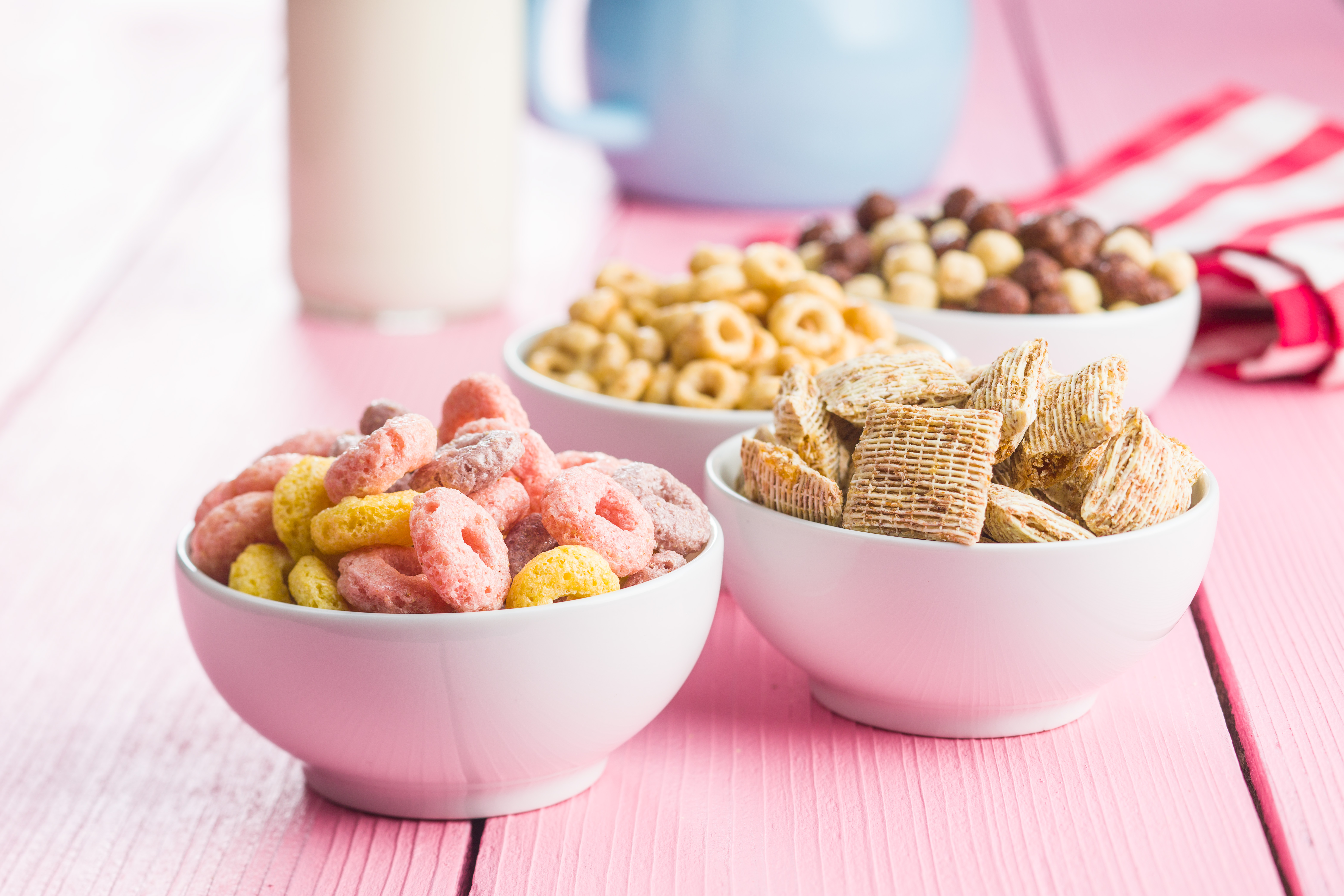
Breakfast cereals are often marketed as a healthy start to the day, yet many of them are laden with hidden sodium. While the focus tends to be on sugar content, salt is often added to enhance flavor and shelf life. Some cereals contain as much as 300 milligrams of sodium per serving, which can quickly add up if you're not careful. This is particularly concerning for those who consume more than one serving, thinking they're making a healthy choice. The sodium content in cereals is often overshadowed by their fiber and vitamin claims, making it easy to overlook. To reduce sodium intake, consider opting for low-sodium or unsalted versions, or better yet, switch to homemade oatmeal or muesli where you can control the ingredients.
2. Bread and Bakery Products: The Silent Sodium Source
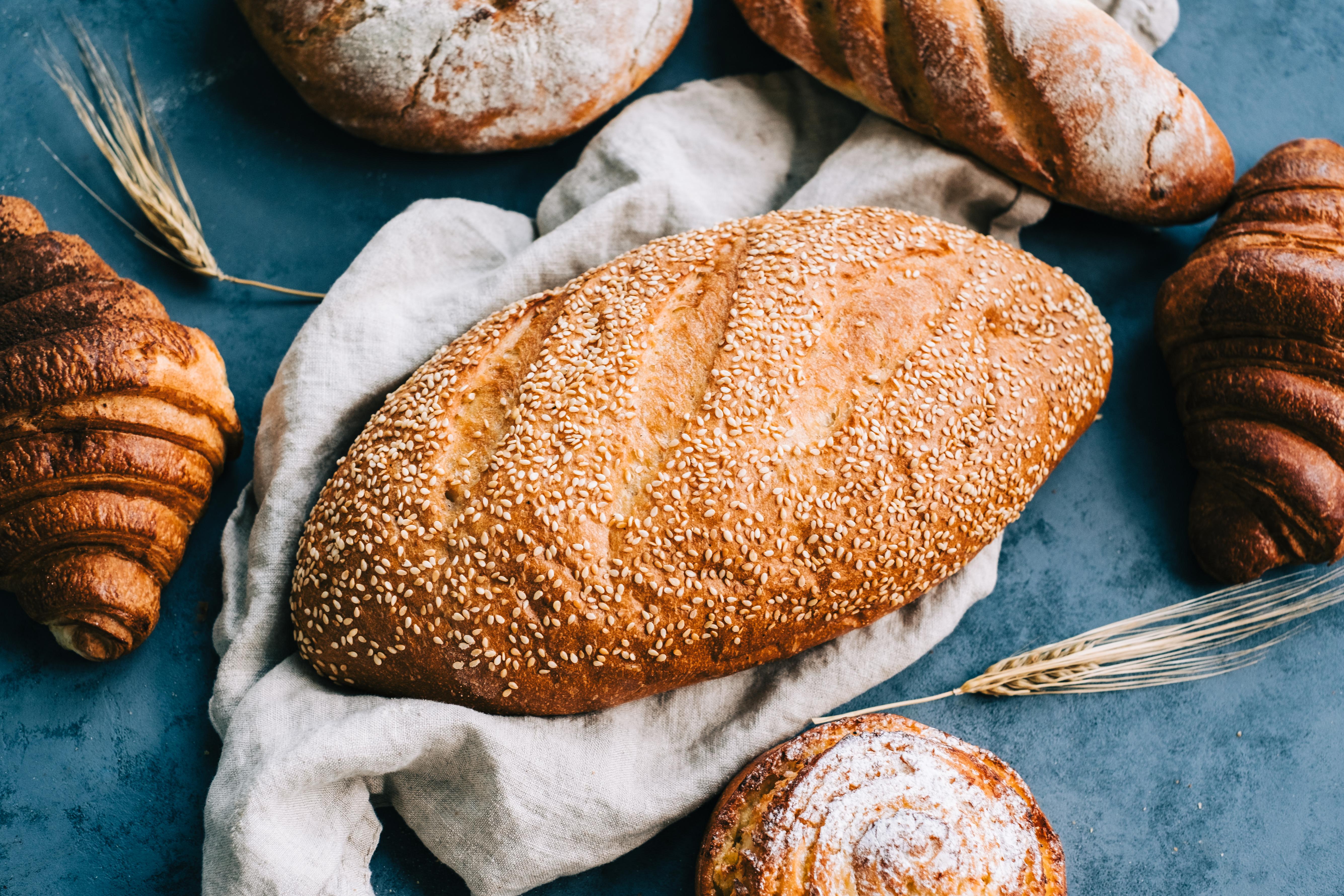
Bread is a staple in many diets around the world, yet it's also a significant source of hidden sodium. A single slice of bread can contain up to 230 milligrams of sodium, and when you consider that sandwiches often require two slices, the sodium content adds up quickly. Bakery products like muffins, bagels, and pastries are also culprits, often containing even higher amounts of sodium due to added preservatives and flavor enhancers. The challenge with bread and bakery products is that they don't taste particularly salty, leading consumers to underestimate their sodium content. To mitigate this, look for products labeled as low-sodium or opt for whole grain varieties, which tend to have less sodium.
3. Canned Soups: A Salty Surprise

Canned soups are a convenient meal option, especially for those with busy lifestyles, but they are notorious for their high sodium content. A single serving of canned soup can contain more than 800 milligrams of sodium, which is a significant portion of the daily recommended intake. The high sodium content is often used to enhance flavor and preserve the soup, making it shelf-stable for longer periods. The problem is exacerbated when consumers eat the entire can, which often contains multiple servings. To reduce sodium intake from soups, consider making homemade versions where you can control the salt content or choose low-sodium canned options available in the market.
4. Processed Meats: The Salty Preservation
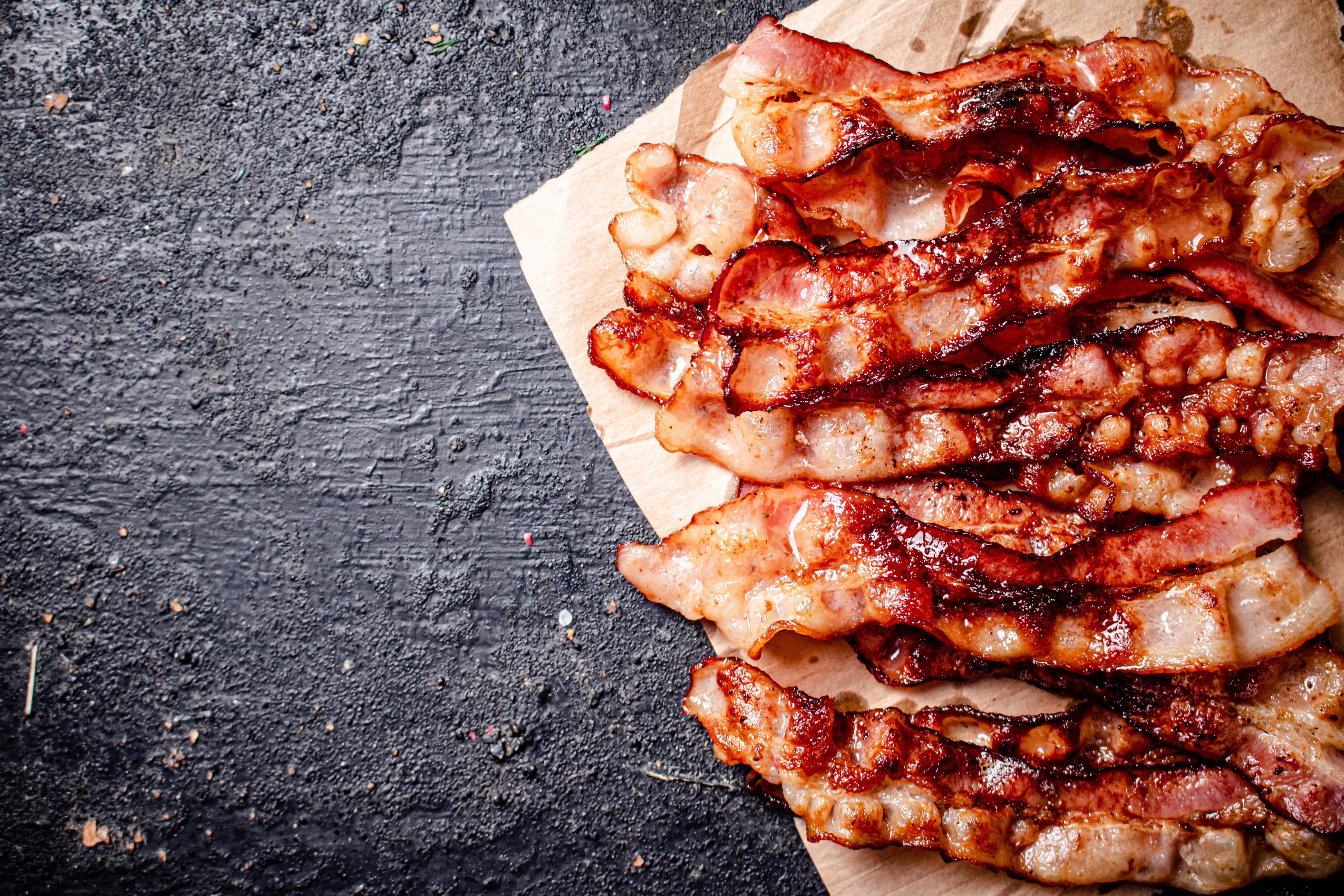
Processed meats such as bacon, sausages, and deli meats are popular for their convenience and taste, but they are also loaded with sodium. The salt is used not only for flavor but also as a preservative to extend the shelf life of these products. A single serving of processed meat can contain upwards of 500 milligrams of sodium, making it a significant contributor to overall sodium intake. The consumption of processed meats has been linked to various health issues, including hypertension and cardiovascular diseases, largely due to their high sodium content. To reduce sodium intake, consider limiting consumption of processed meats and opting for fresh, lean cuts of meat instead.
5. Frozen Meals: Convenience with a Sodium Cost

Frozen meals offer a quick and easy solution for dinner, but they come with a hidden sodium cost. These meals are often high in sodium to enhance flavor and preserve the food during freezing. Some frozen meals can contain more than 1,000 milligrams of sodium per serving, which is a substantial portion of the daily recommended intake. The convenience of these meals makes them a popular choice, but it's important to be mindful of their sodium content. To reduce sodium intake from frozen meals, look for options labeled as low-sodium or prepare homemade meals in bulk and freeze them for later use.
6. Cheese: The Salty Dairy Delight

Cheese is a beloved dairy product enjoyed by many, but it's also a significant source of hidden sodium. The salt in cheese serves multiple purposes, including flavor enhancement, moisture control, and preservation. Some cheeses, such as feta and halloumi, can contain over 400 milligrams of sodium per ounce. Cheese is often used in various dishes, from sandwiches to pastas, which can lead to a high cumulative sodium intake. To enjoy cheese without the excessive sodium, opt for low-sodium varieties or use smaller amounts of stronger-flavored cheeses to achieve the desired taste without overconsumption.
7. Sauces and Condiments: The Flavorful Sodium Boost
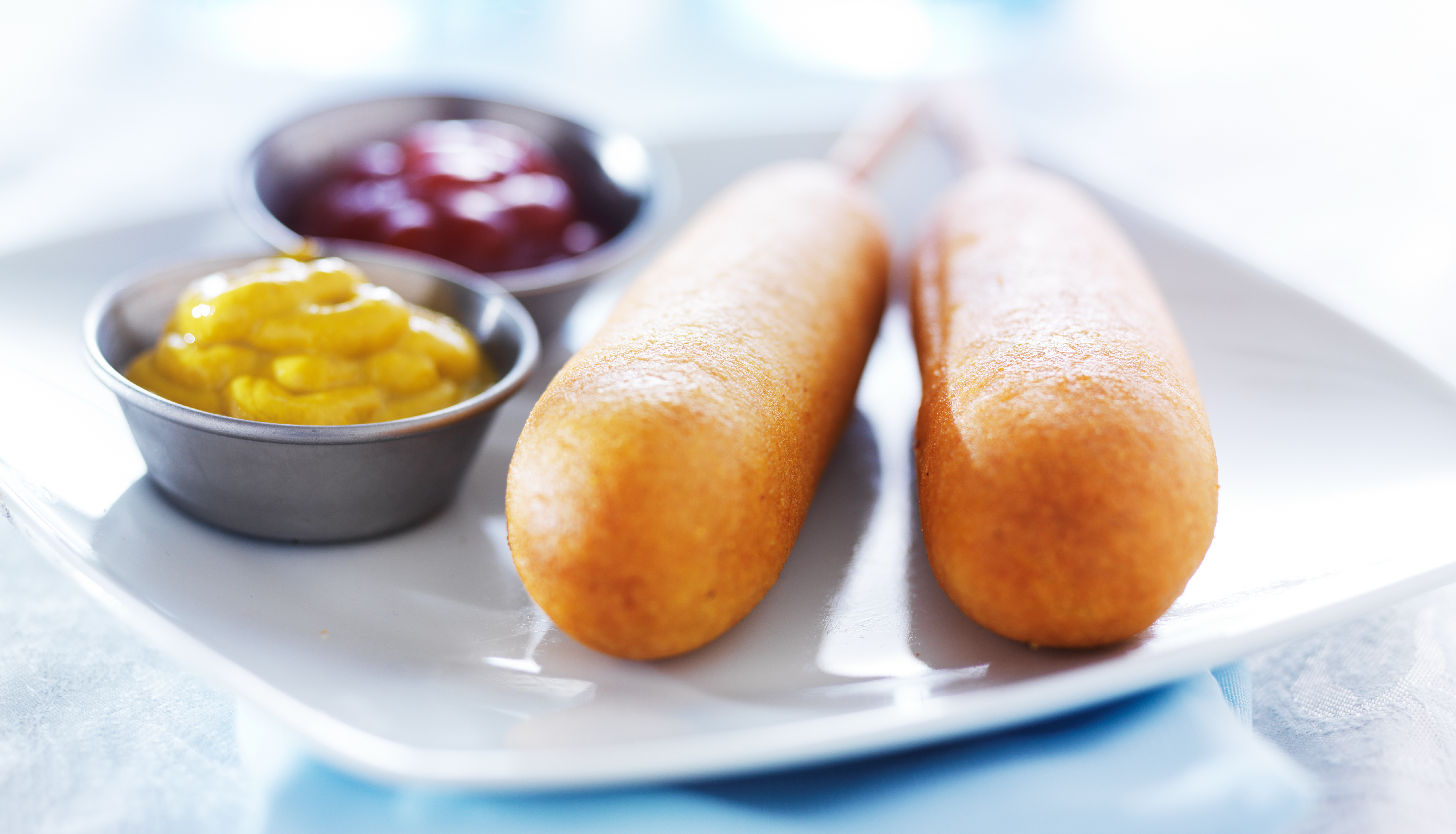
Sauces and condiments are used to add flavor to meals, but they can also add a significant amount of sodium. Soy sauce, ketchup, and salad dressings are common culprits, with soy sauce containing as much as 1,000 milligrams of sodium per tablespoon. These items are often added liberally to dishes, leading to a substantial increase in sodium intake. The challenge is that sauces and condiments are rarely consumed in isolation, making it easy to overlook their contribution to overall sodium intake. To reduce sodium from sauces and condiments, consider using herbs and spices for flavor or choose low-sodium versions available in stores.
8. Snack Foods: The Salty Crave

Snack foods such as chips, pretzels, and crackers are popular for their convenience and taste, but they are also high in sodium. The salt in these snacks enhances flavor and provides a satisfying crunch, but it can also lead to excessive sodium consumption. A single serving of chips can contain over 200 milligrams of sodium, and it's easy to consume multiple servings in one sitting. The addictive nature of salty snacks makes it challenging to limit intake, leading to potential health issues over time. To reduce sodium intake from snacks, choose unsalted or lightly salted options, or opt for healthier snacks like fruits and vegetables.
9. Restaurant Meals: The Hidden Sodium Feast
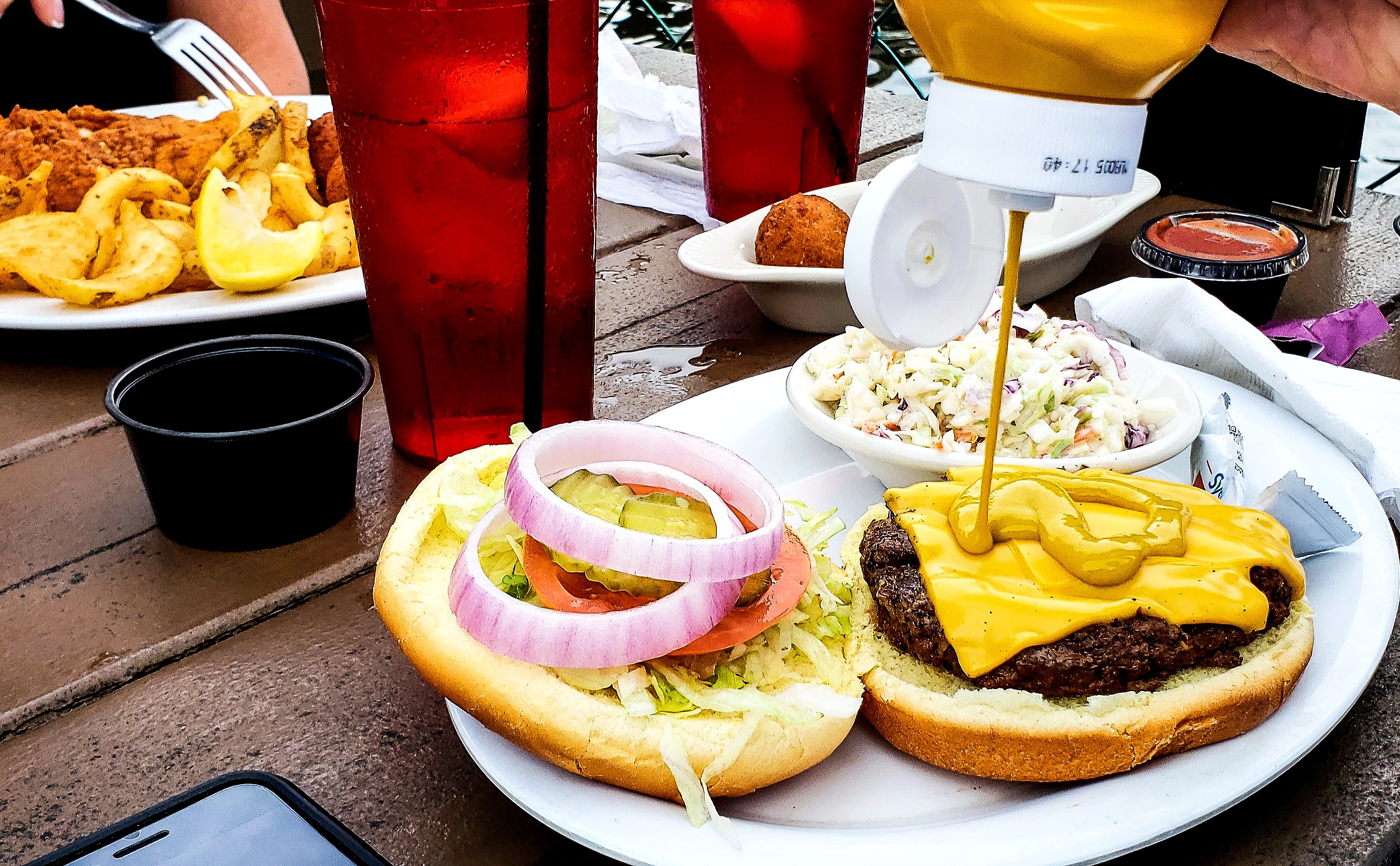
Dining out is a common practice for many, but restaurant meals are often laden with hidden sodium. Chefs use salt to enhance flavor and ensure customer satisfaction, leading to dishes that can contain over 2,000 milligrams of sodium. The challenge is that restaurant menus rarely disclose sodium content, making it difficult for consumers to make informed choices. To reduce sodium intake when dining out, consider asking for dishes to be prepared with less salt or choose restaurants that provide nutritional information. Additionally, be mindful of portion sizes, as larger servings often mean higher sodium content.
10. Pickles and Fermented Foods: The Traditional Sodium Source
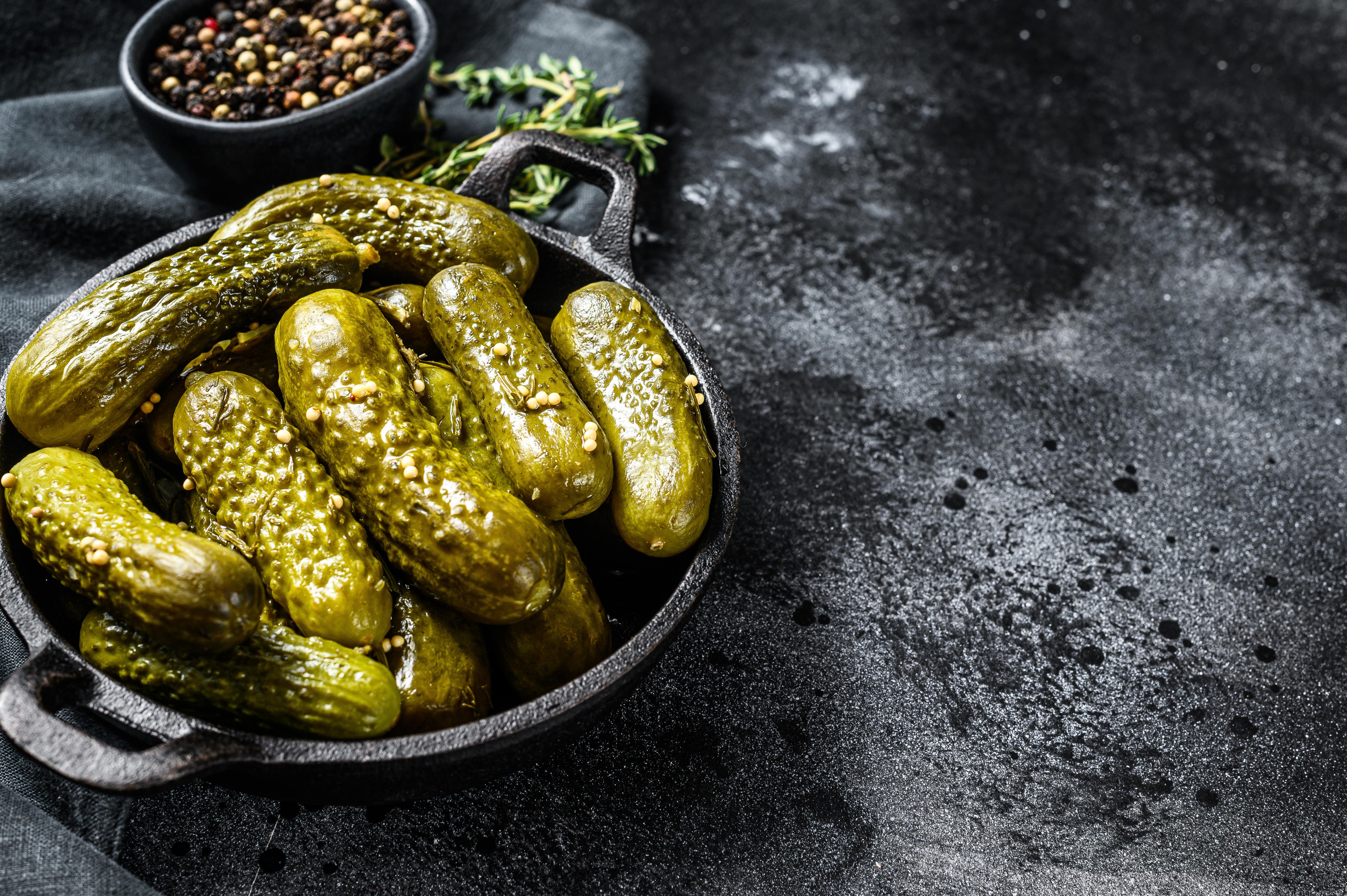
Pickles and fermented foods have been enjoyed for centuries for their unique flavors and health benefits, but they are also high in sodium. The salt in these foods is essential for the fermentation process, which preserves the food and enhances its flavor. A single pickle can contain over 300 milligrams of sodium, making it a significant contributor to daily sodium intake. While fermented foods offer probiotics and other health benefits, it's important to consume them in moderation to avoid excessive sodium intake. To reduce sodium, consider making your own pickles with less salt or choose low-sodium store-bought options.
11. Instant Noodles: The Quick Sodium Fix
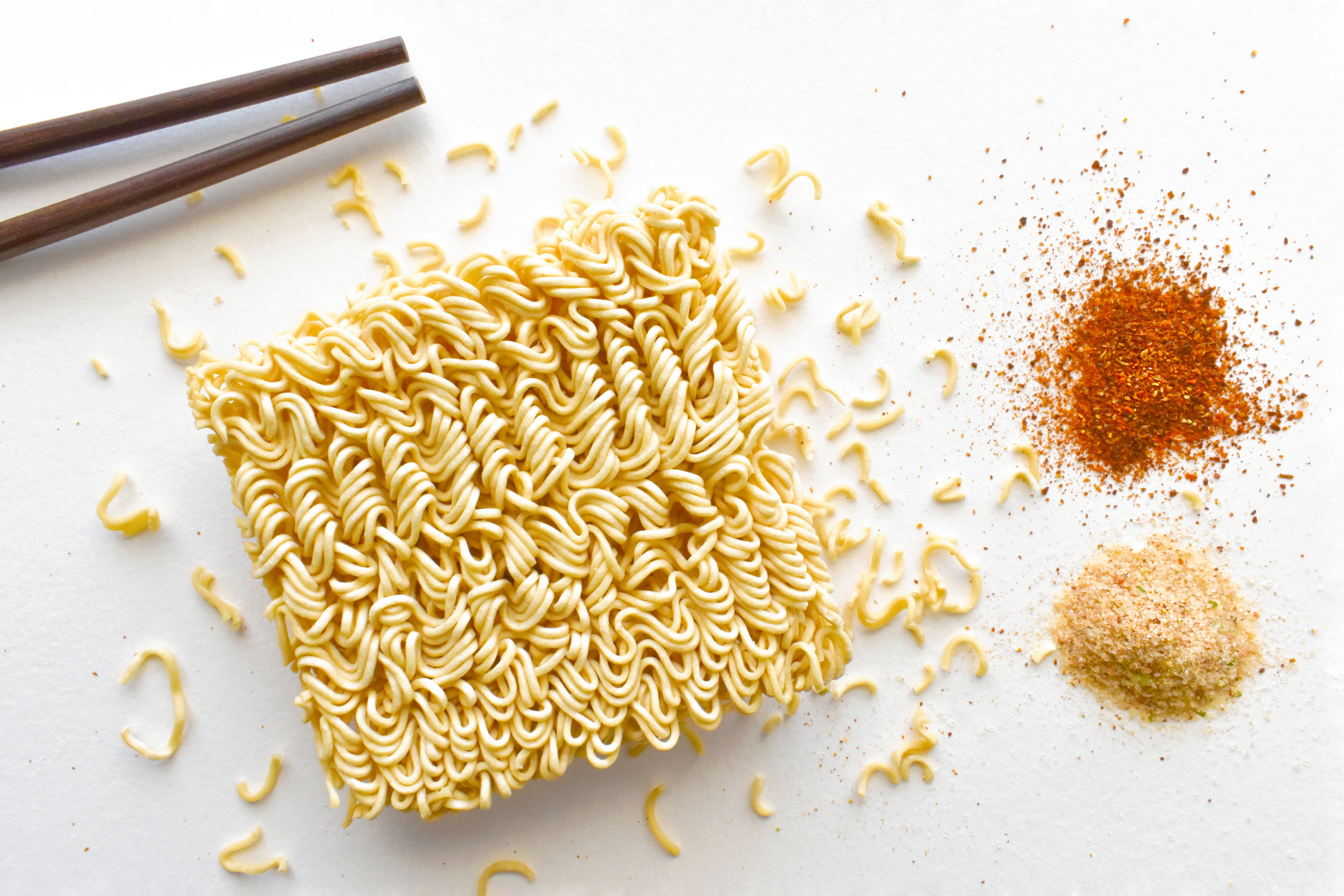
Instant noodles are a popular convenience food, especially among students and busy professionals, but they are also high in sodium. The flavor packets that accompany instant noodles often contain more than 1,000 milligrams of sodium, which is a substantial portion of the daily recommended intake. The ease of preparation and low cost make instant noodles a tempting choice, but their high sodium content poses a health risk. To reduce sodium intake from instant noodles, consider using only a portion of the flavor packet or adding your own low-sodium seasonings. Alternatively, opt for whole grain noodles and prepare your own broth to control the sodium content.
12. Canned Vegetables: The Unexpected Sodium Addition
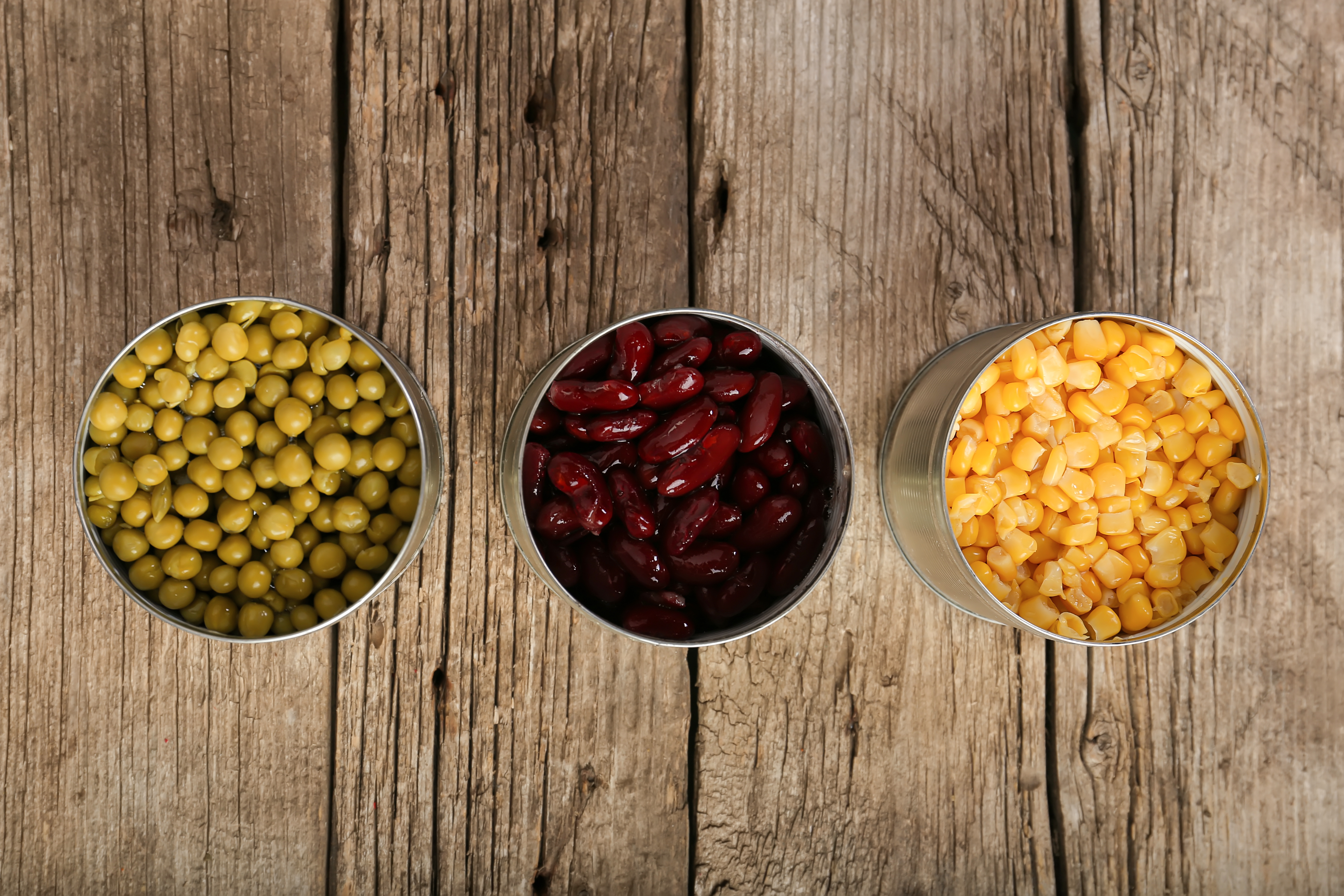
Canned vegetables are a convenient and affordable way to add nutrients to your diet, but they often come with added sodium. The salt in canned vegetables is used as a preservative to extend shelf life and enhance flavor. A single serving of canned vegetables can contain over 300 milligrams of sodium, making it easy to exceed the daily recommended intake if consumed regularly. To reduce sodium intake from canned vegetables, consider rinsing them under water before use to remove some of the sodium. Alternatively, choose fresh or frozen vegetables, which typically have no added sodium.
13. Sports Drinks: The Salty Hydration

Sports drinks are marketed as a way to replenish electrolytes and hydrate after exercise, but they also contain significant amounts of sodium. While sodium is necessary to replace lost electrolytes, many sports drinks contain more than 200 milligrams of sodium per serving, which can contribute to excessive sodium intake if consumed frequently. The challenge is that sports drinks are often consumed by individuals who do not engage in intense physical activity, leading to unnecessary sodium consumption. To reduce sodium intake, consider drinking water or coconut water for hydration, or choose sports drinks with lower sodium content.
14. Ready-to-Eat Salads: The Sodium-Laden Health Trap

Ready-to-eat salads are often perceived as a healthy meal option, but they can be surprisingly high in sodium. The sodium content often comes from the dressing, cheese, and processed meats included in the salad. A single serving of ready-to-eat salad can contain over 1,000 milligrams of sodium, making it a significant contributor to daily intake. The convenience of these salads makes them a popular choice, but it's important to be mindful of their sodium content. To reduce sodium intake, consider making your own salads at home with fresh ingredients and low-sodium dressings, or choose salads with simple ingredients and dressings on the side.
15. Fast Food: The Sodium Bomb
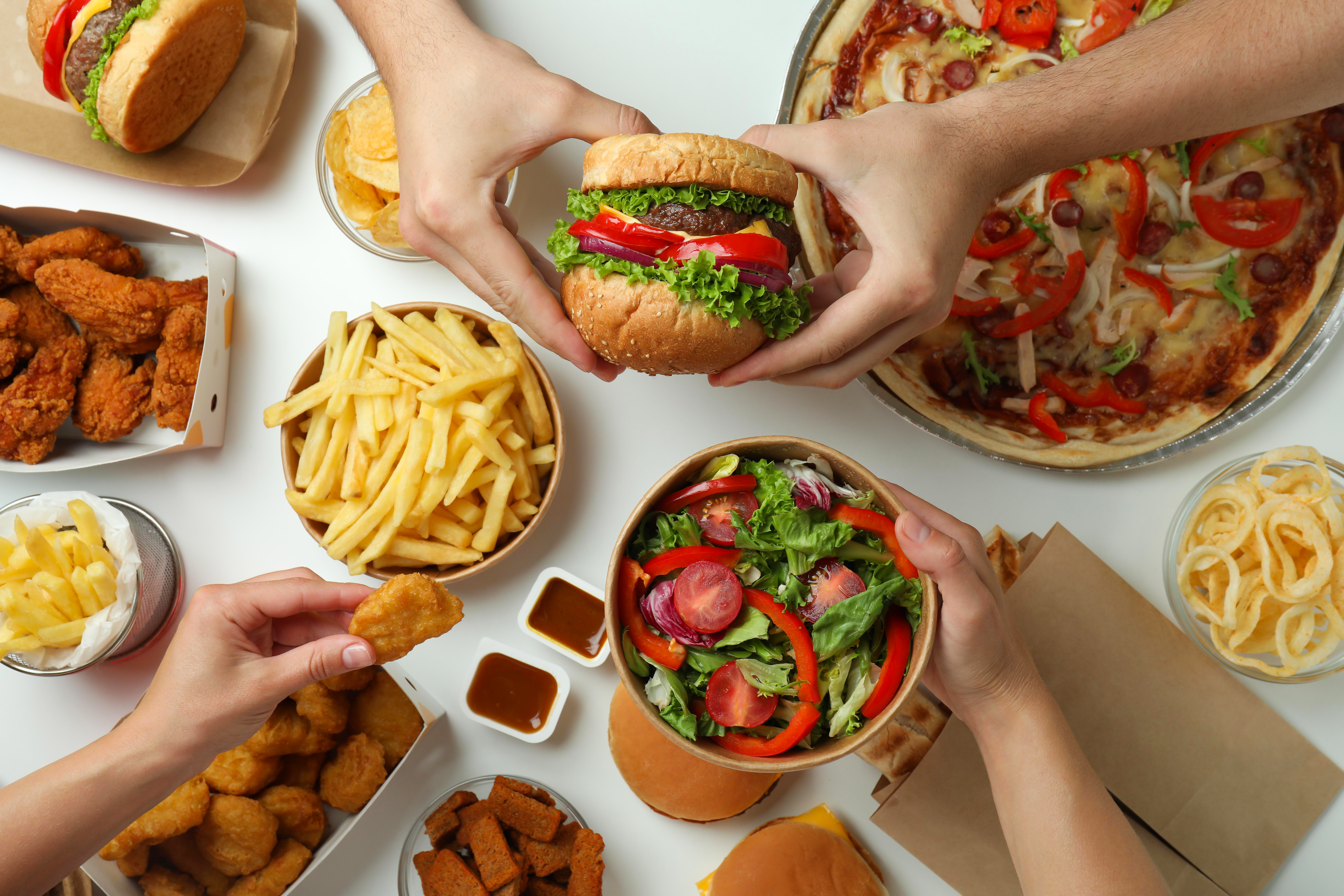
Fast food is a staple for many due to its convenience and affordability, but it is notorious for its high sodium content. A single fast food meal can contain over 2,500 milligrams of sodium, which is well above the daily recommended intake. The salt in fast food is used to enhance flavor and preserve the food, making it a significant contributor to overall sodium intake. The challenge is that fast food is often consumed on the go, making it easy to overlook its nutritional content. To reduce sodium intake from fast food, consider choosing smaller portions, avoiding extras like fries and sauces, or opting for healthier menu options.
16. Cottage Cheese: The Hidden Salty Dairy

Cottage cheese is often considered a protein-rich, low-fat food, making it a favorite among health-conscious eaters. However, most store-bought varieties contain an unexpected sodium punch. A half-cup serving can have up to 400–500 mg of sodium, which adds up quickly if you're eating it regularly. Opting for low-sodium or no-salt-added versions can help reduce your intake without sacrificing the creamy texture and protein benefits.
17. Instant Oatmeal: A Salty Start to Your Day

Oatmeal is generally regarded as a heart-healthy breakfast, but pre-packaged flavored varieties often contain added sodium to enhance taste and prolong shelf life. Some instant oatmeals pack over 250 mg of sodium per packet, making it easy to consume more than you realize, especially if you add toppings like nut butter or milk. Choosing plain, unsweetened oats and seasoning with cinnamon, fruit, or honey is a better way to keep your breakfast both nutritious and low in sodium.
18. Plant-Based Meat Alternatives: The Sneaky Sodium Swap
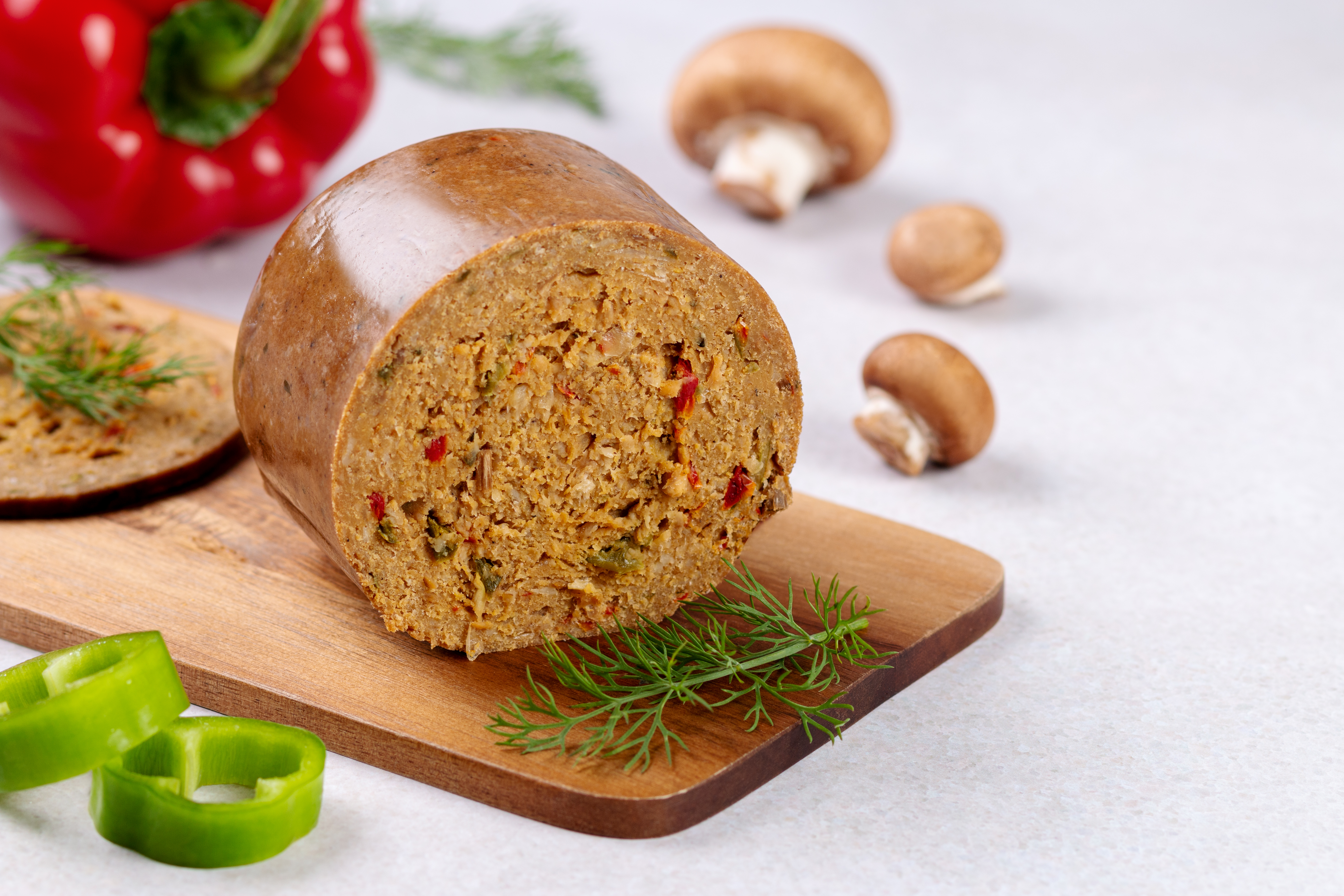
As plant-based diets gain popularity, more people are turning to meat alternatives like veggie burgers, tofu, and plant-based sausages. While they may be a healthier alternative to processed meats, many of these products are loaded with sodium to mimic the taste and texture of real meat. Some veggie burgers can contain up to 500 mg of sodium per patty—almost a quarter of your daily recommended intake. When choosing plant-based meats, check the sodium content and opt for minimally processed options whenever possible.
19. Canned Beans and Legumes: The Salty Protein Source
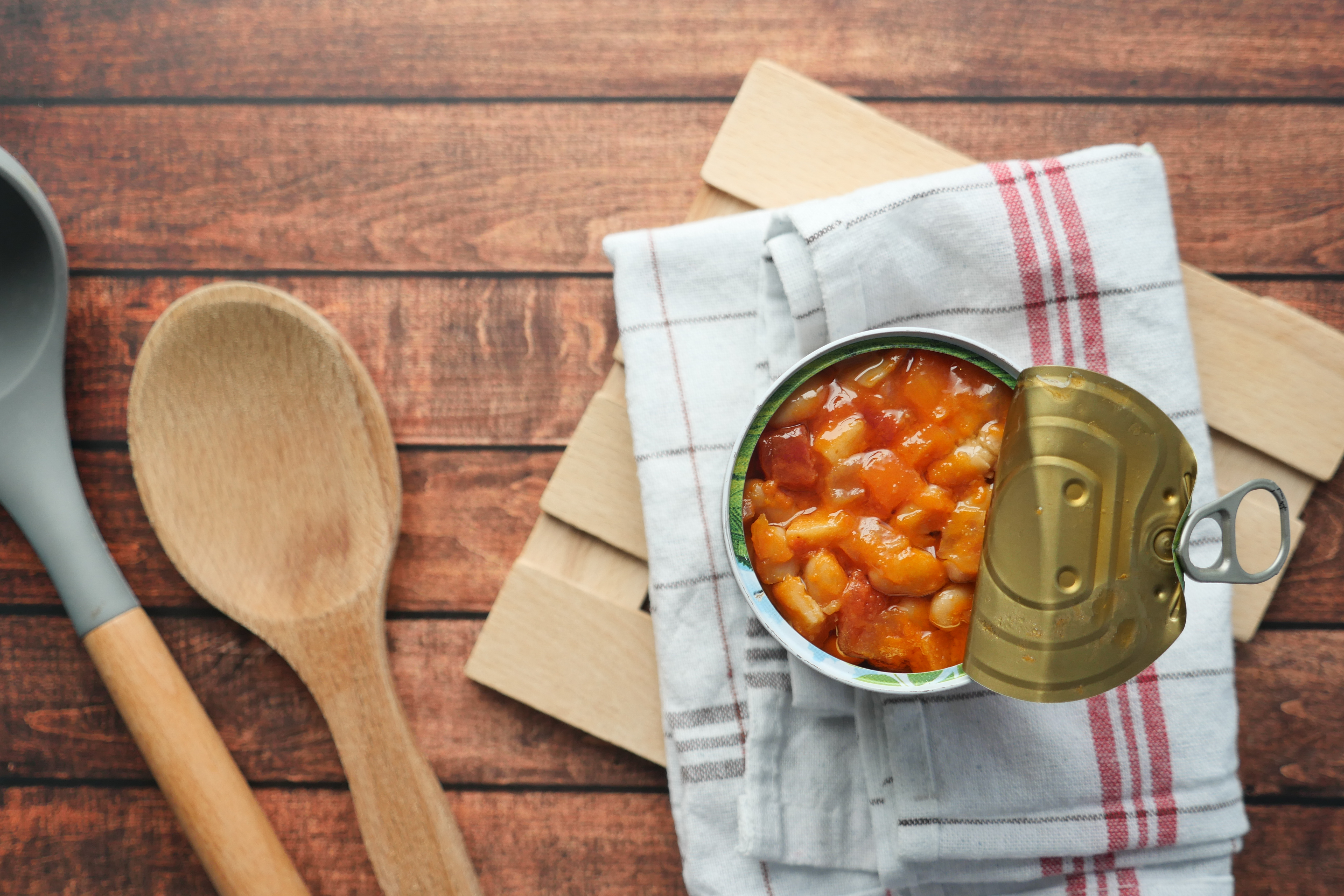
Beans and legumes are nutritional powerhouses packed with fiber, protein, and essential nutrients, but canned versions often contain high amounts of sodium to preserve freshness. A single cup of canned beans can have over 400 mg of sodium, which can add up quickly in soups, salads, or dips. Draining and rinsing canned beans can remove up to 40% of the sodium, but for an even healthier option, choose dried beans and cook them yourself.
20. Sushi Rolls: The Sodium Surprise from the Sea
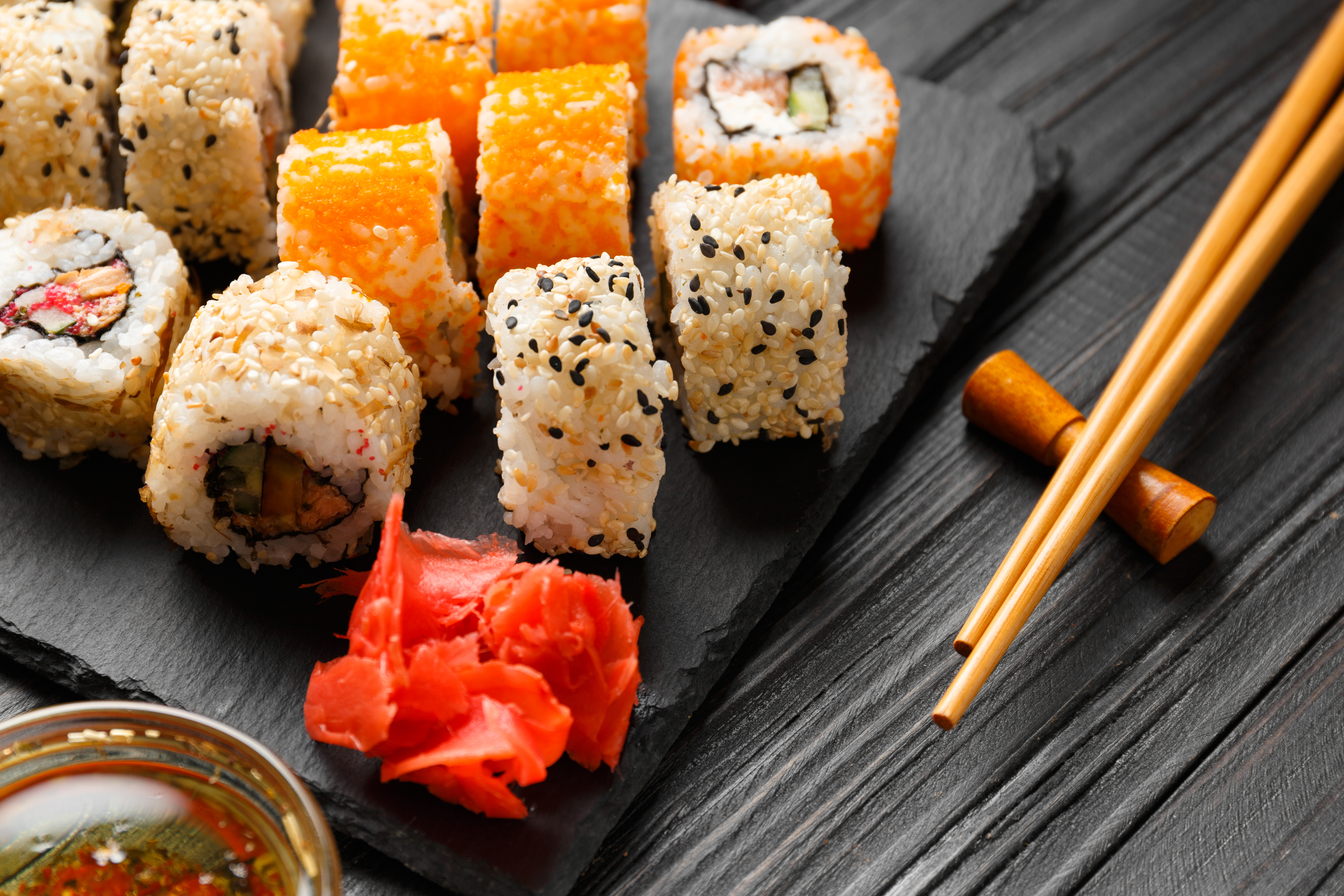
Sushi is often seen as a fresh and light meal, but many sushi rolls hide a surprising amount of sodium—not just from soy sauce. Ingredients like imitation crab, spicy mayo, teriyaki sauce, and pickled vegetables contribute to high sodium levels. A single sushi roll can contain 600–1,200 mg of sodium, depending on the ingredients. If you love sushi, opt for simpler rolls like sashimi or avocado rolls and go easy on the soy sauce by using low-sodium options.
21. Rotisserie Chicken: The Pre-Seasoned Salt Trap
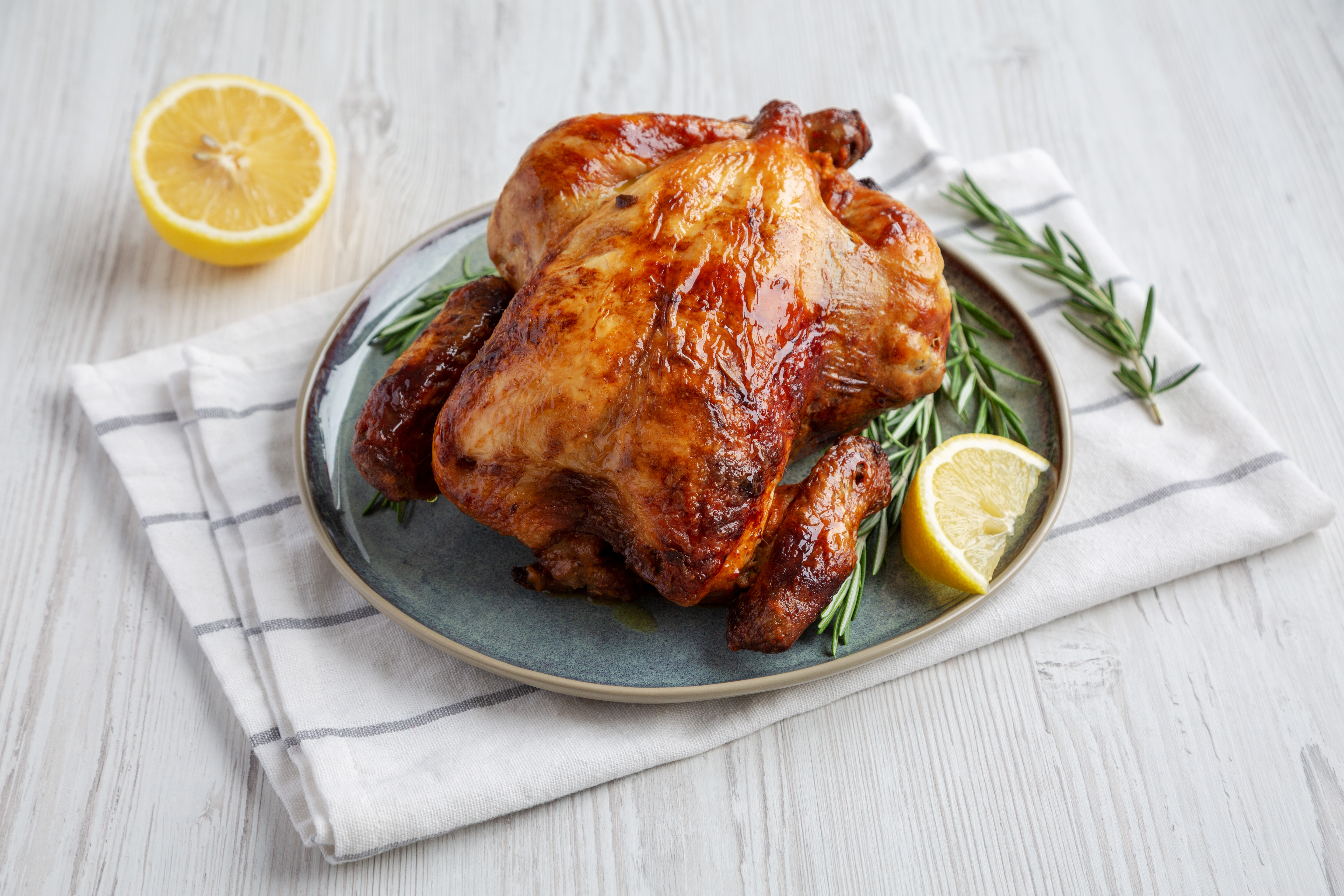
Rotisserie chicken is a convenient and flavorful protein source, but many store-bought versions are heavily seasoned with salt and injected with sodium-containing solutions to keep the meat juicy. A single serving of rotisserie chicken can contain over 600 mg of sodium, and if you eat the skin, that number climbs even higher. If possible, choose fresh, unseasoned chicken or roast your own at home using herbs and spices instead of salt.
22. Protein Bars: The Fitness-Friendly Sodium Sneak

Protein bars are marketed as a quick and healthy snack, but some brands contain as much sodium as a bag of chips—especially those designed to be meal replacements. Many bars contain 200–400 mg of sodium per serving, and flavored options like peanut butter or salted caramel tend to have even more. To keep your snack healthy, look for low-sodium protein bars or make your own using natural ingredients like nuts, seeds, and dates.
23. Bottled Salad Dressings: The Flavorful Sodium Boost
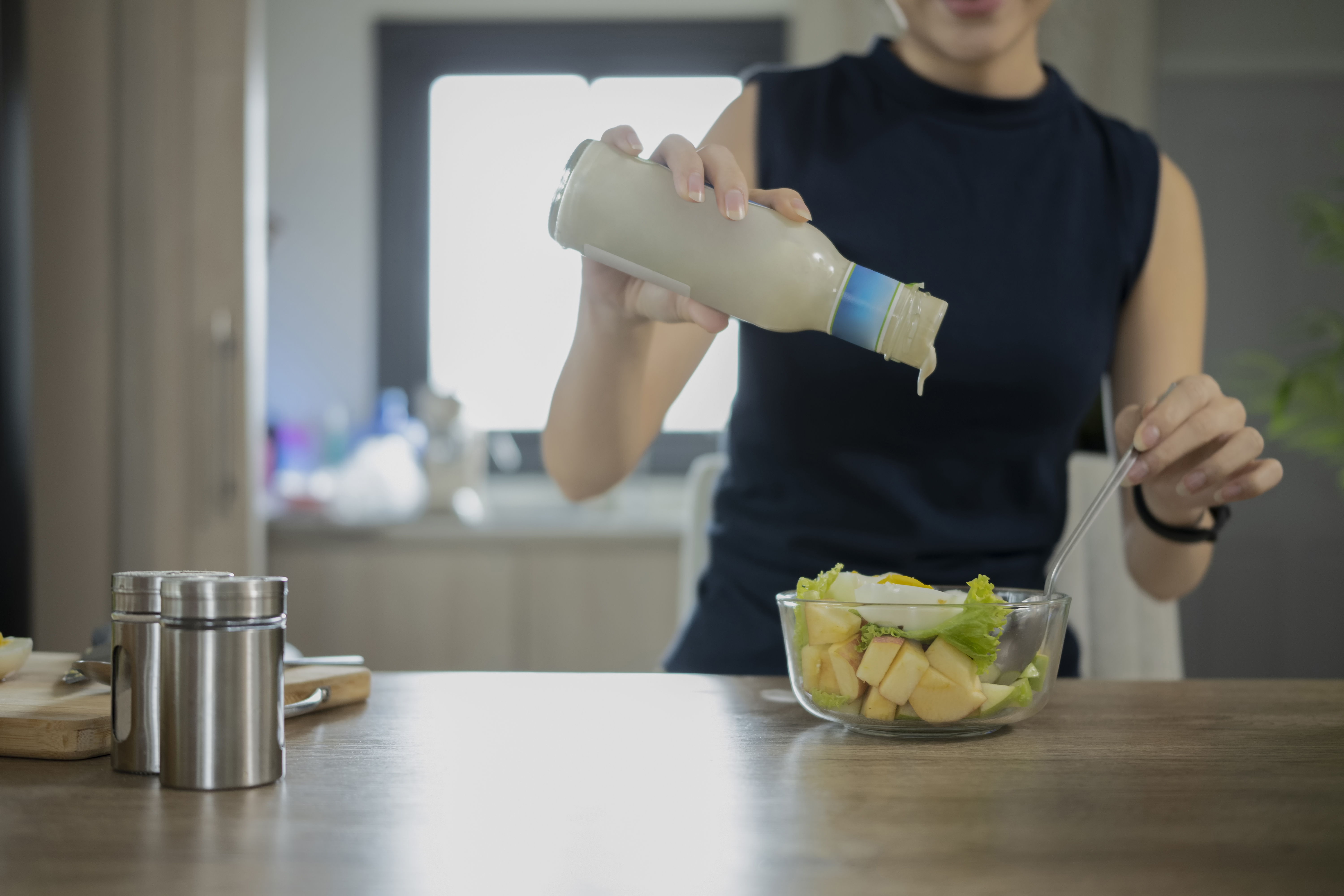
Many people add store-bought dressings to salads thinking they’re making a healthy choice, but these dressings often contain 250–500 mg of sodium per two-tablespoon serving. Creamy dressings like ranch, Caesar, and blue cheese tend to be the worst offenders, while vinaigrettes and fat-free dressings also pack hidden sodium. To cut back, make homemade dressings using olive oil, vinegar, lemon juice, and fresh herbs.
24. Pancake and Waffle Mixes: The Breakfast Salt Bomb
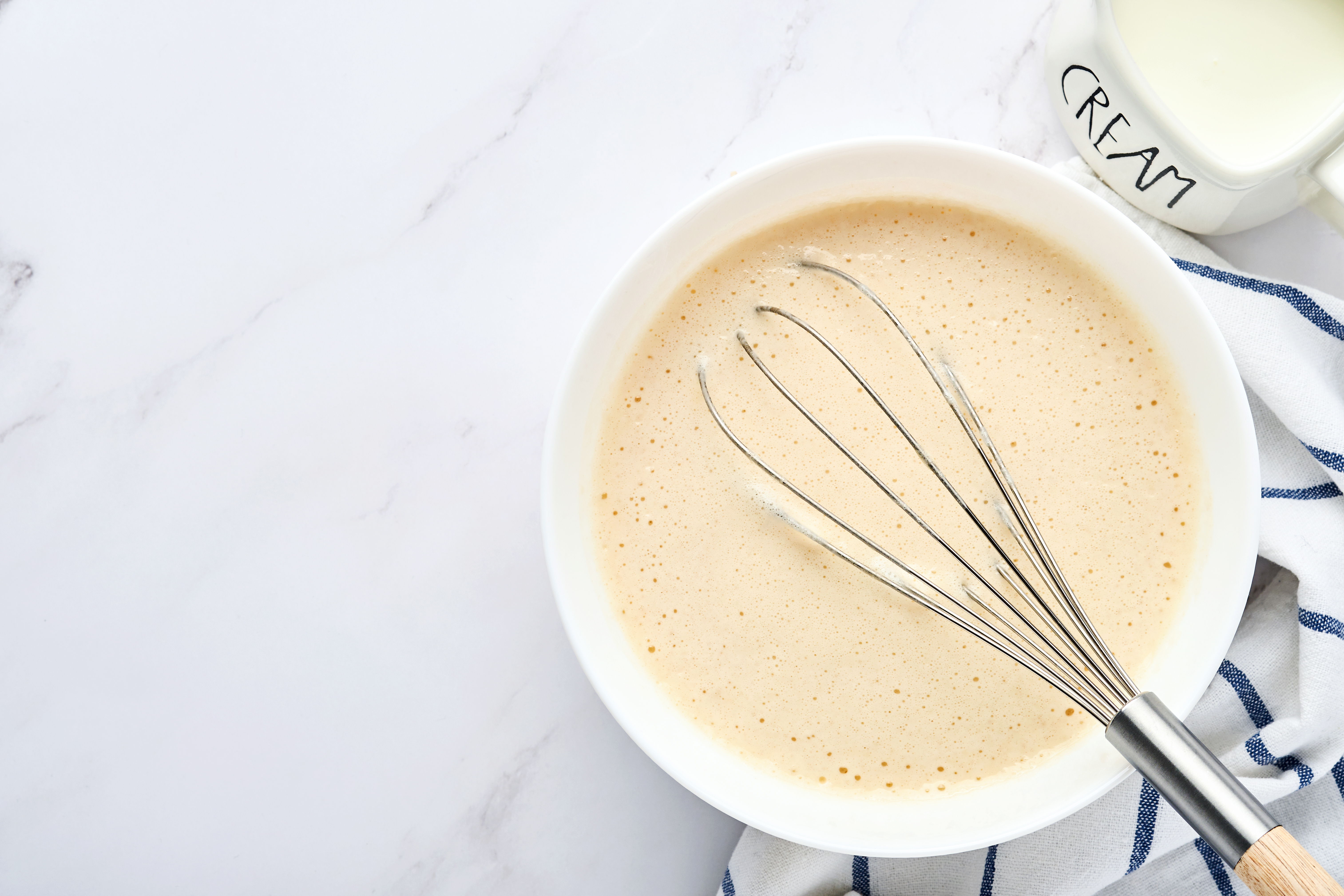
Pancakes and waffles may taste sweet, but boxed mixes contain surprising amounts of sodium from added baking agents and preservatives. Some mixes contain over 400 mg of sodium per serving, and that’s before adding butter, syrup, or toppings. To keep your breakfast lower in sodium, consider making homemade pancakes using whole wheat flour, baking powder, and fresh ingredients.
25. Cottage-Style Cheese Crackers: The Crunchy Sodium Surprise
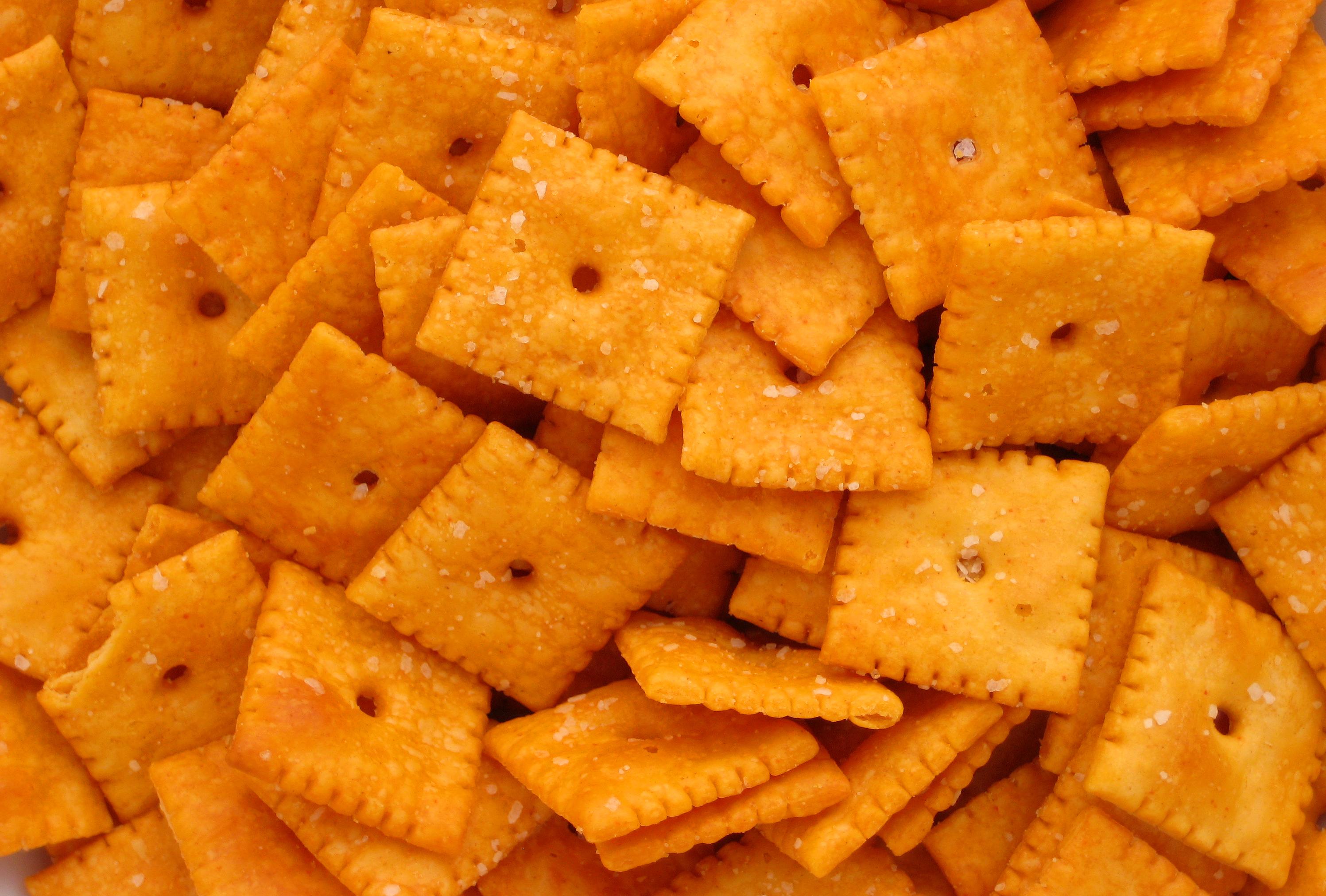
Cheese-flavored crackers, like cheddar or ranch-flavored snack crackers, may seem harmless, but they often contain 200–300 mg of sodium per serving—and let’s be honest, it’s easy to eat more than one serving at a time. The combination of cheese powder and added preservatives makes these snacks one of the biggest hidden sodium sources in your pantry. Instead, try unsalted whole-grain crackers or make your own snacks using nuts, seeds, or homemade pita chips.
26. Oat Milk and Other Plant-Based Milks
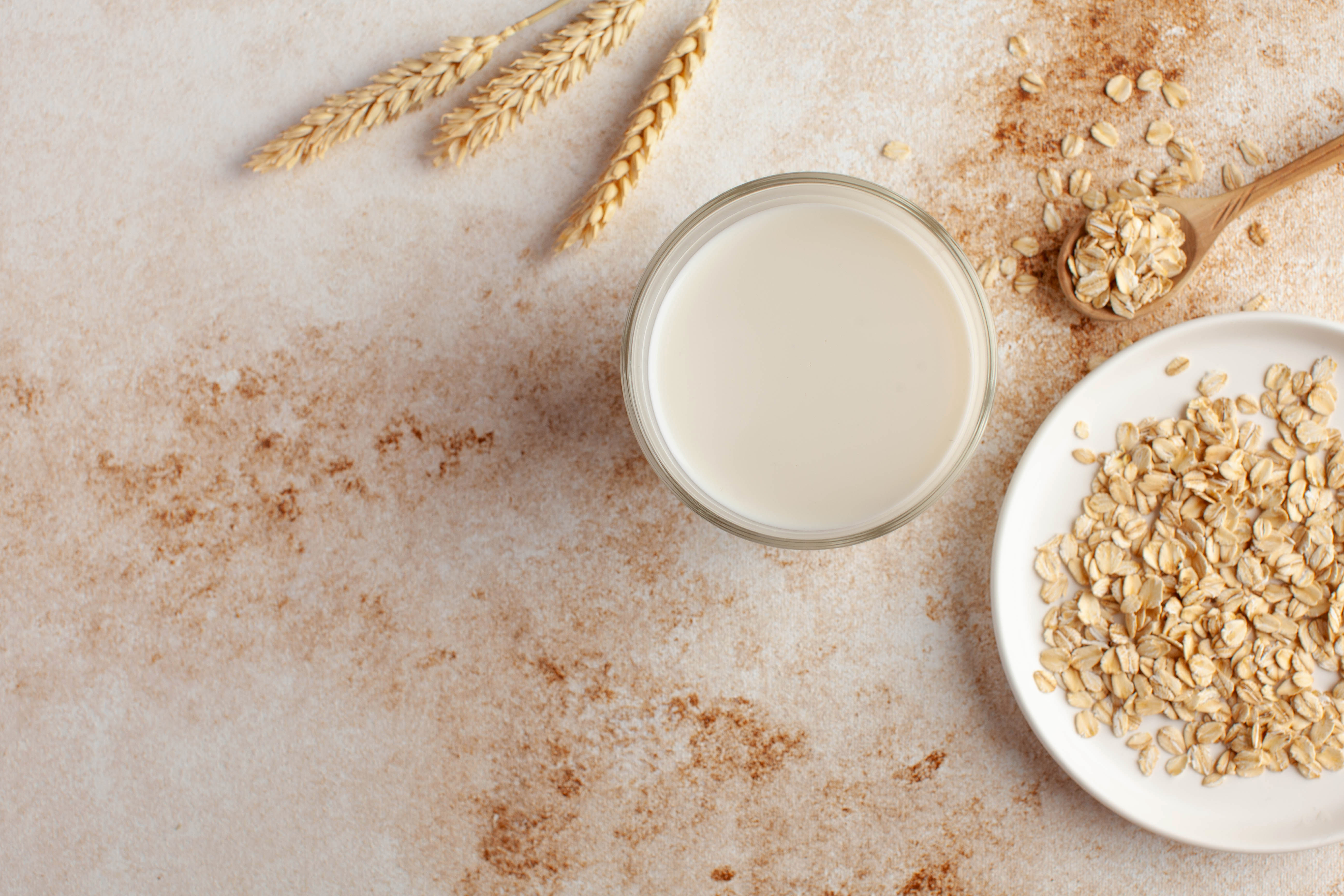
Plant-based milks like oat, almond, and soy have become go-to dairy alternatives thanks to their creamy texture and perceived health benefits. But despite being labeled as "heart-healthy" or “vegan-friendly,” many are surprisingly high in hidden sodium. Some brands sneak in over 150 mg of sodium per cup—even in unsweetened or “original” versions. This sodium is often added to enhance flavor and improve shelf stability, especially in flavored varieties like vanilla, chocolate, or barista-style blends. If you drink plant-based milk daily in coffee, smoothies, or cereal, the sodium can quickly add up. To stay on the safe side, always check the nutrition label and opt for “unsweetened” and “no added salt” or “low sodium” options. Better yet, try making your own plant-based milk at home with soaked nuts or oats and water—no hidden salt, and full control over ingredients.
27. Tomato Juice and Vegetable Cocktails

Tomato juice might seem like a health-conscious choice, especially with its high lycopene content and savory flavor, but it’s also a sodium heavyweight. A typical 8-ounce serving of regular tomato juice can contain over 600 mg of sodium, which is nearly a third of the daily recommended limit. Even “low sodium” versions often hover around 150–200 mg per serving. Vegetable cocktail blends like V8 may promote their vitamin content, but they frequently include added salt or salty flavoring agents to extend shelf life and boost taste. Many people sip these as snacks or meal replacements, not realizing how much salt they’re consuming. To cut down on sodium, try juicing your own vegetables at home or diluting store-bought versions with water and herbs. This way, you can still enjoy the flavor and nutrients—without the salt overload.
28. Tofu (Pre-Seasoned or Marinated)
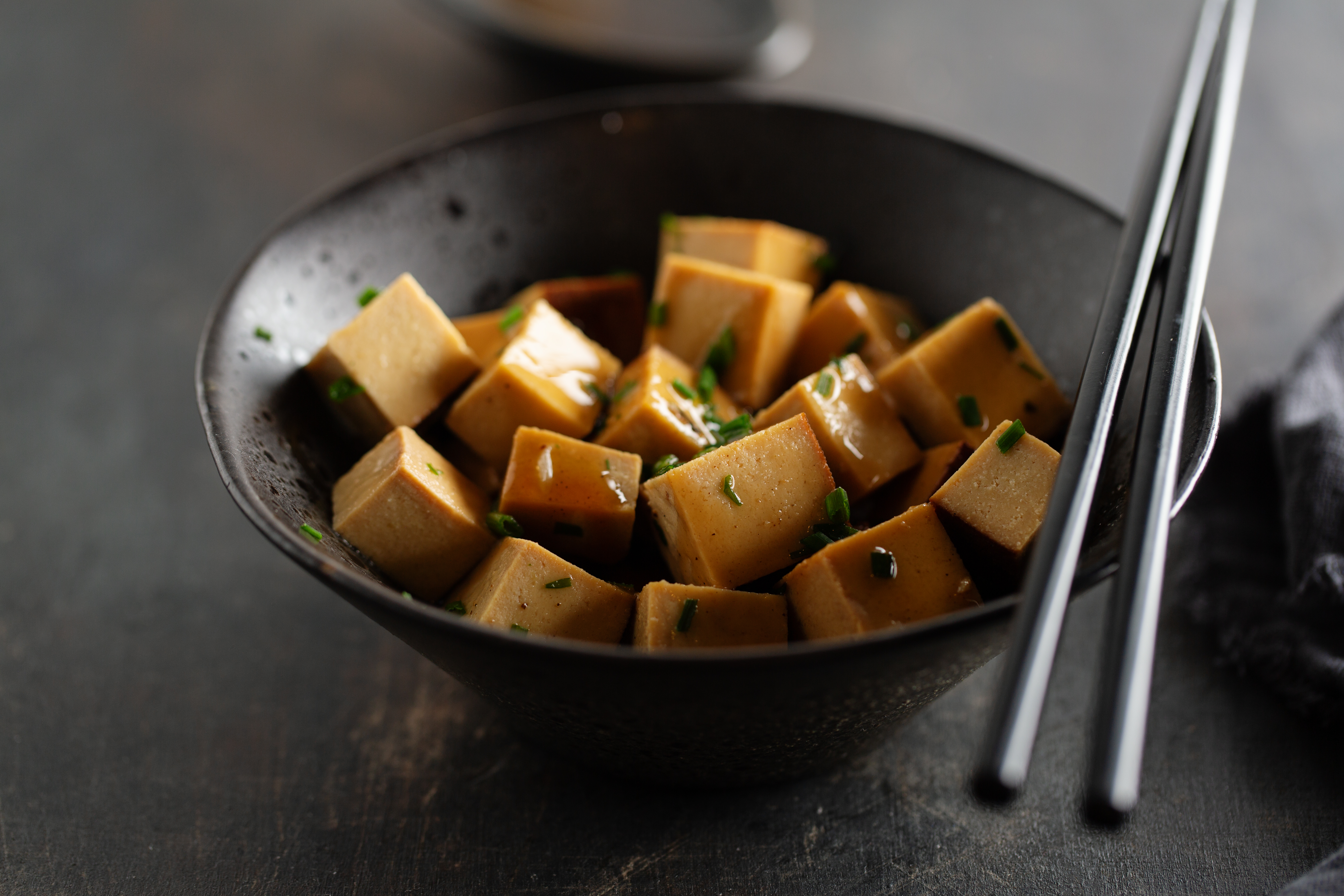
Tofu is widely praised as a plant-based protein staple, but not all tofu is created equal—especially when it comes to sodium content. While plain tofu is naturally low in sodium, many vacuum-sealed or pre-marinated varieties are packed with sodium-heavy flavorings to mimic the savory taste of meat or make them ready-to-eat. A single serving can deliver upwards of 400–500 mg of sodium, and flavored varieties like teriyaki, barbecue, or sesame-ginger can pack even more. Since tofu tends to soak up whatever it’s cooked in, the seasoning often penetrates the entire block, making it difficult to remove excess salt. If you’re watching your sodium intake, your best bet is to buy plain tofu and season it yourself with low-sodium soy sauce, citrus, garlic, or fresh herbs. You’ll get full flavor—without the unnecessary salt hit.
29. Smoked Salmon and Cured Fish
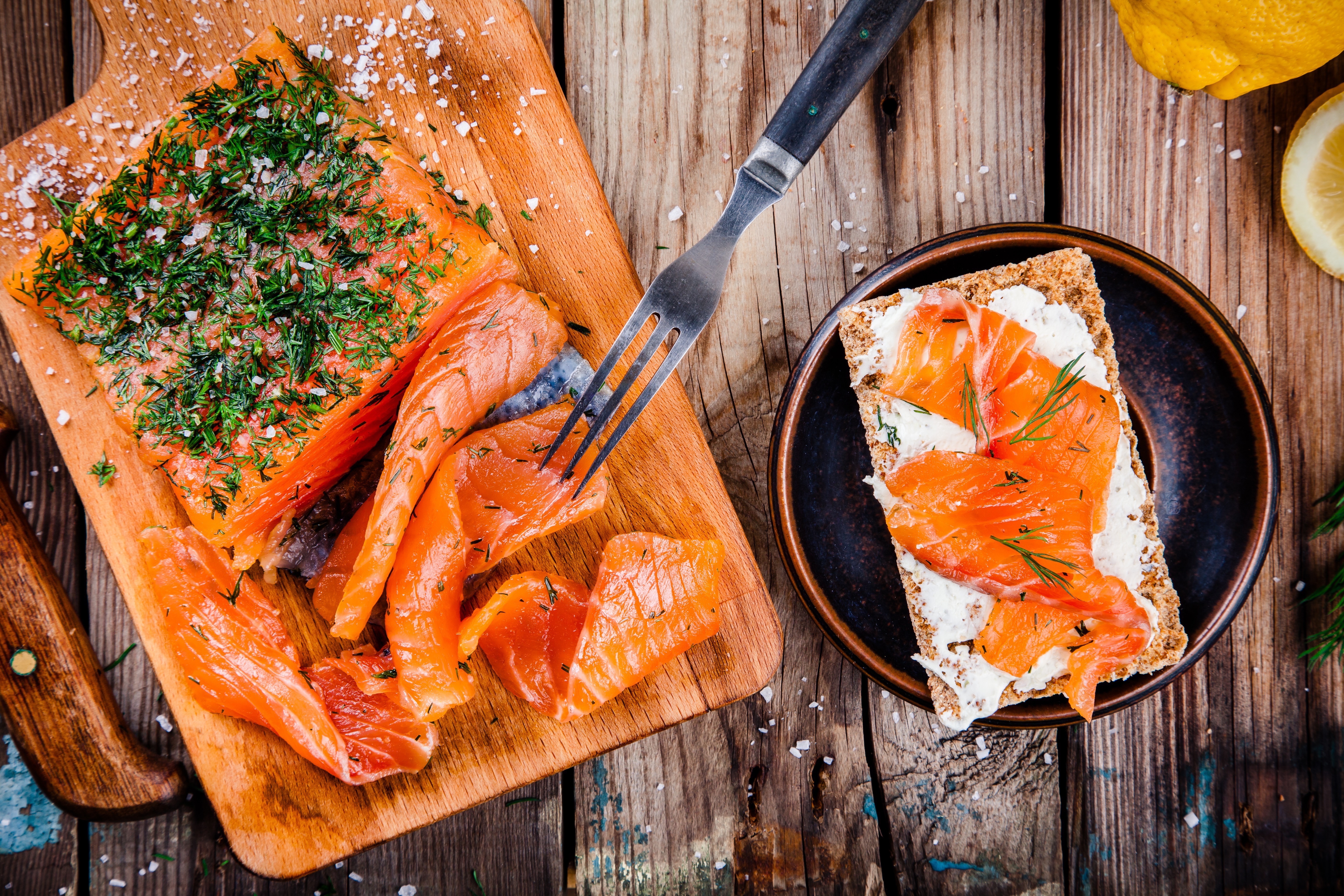
Smoked salmon might seem like a gourmet indulgence packed with omega-3s, but it's also a sodium bomb in disguise. Just a 2-ounce serving of smoked salmon can pack 600 to 700 mg of sodium—or more, depending on the brand and preparation. That’s nearly 30% of your daily recommended intake in just a few bites. The curing process involves soaking or rubbing the fish in a salty brine to preserve it and give it that signature flavor and texture. Other cured seafood, like lox, kippers, or gravlax, are similarly high in sodium. If you enjoy smoked salmon regularly on bagels or salads, it’s worth seeking out low-sodium alternatives or balancing your portion size with lower-sodium foods. Better yet, opt for fresh-cooked salmon seasoned with herbs and lemon for a heart-healthy and lower-salt alternative.
30. Packaged Rice and Pasta Mixes
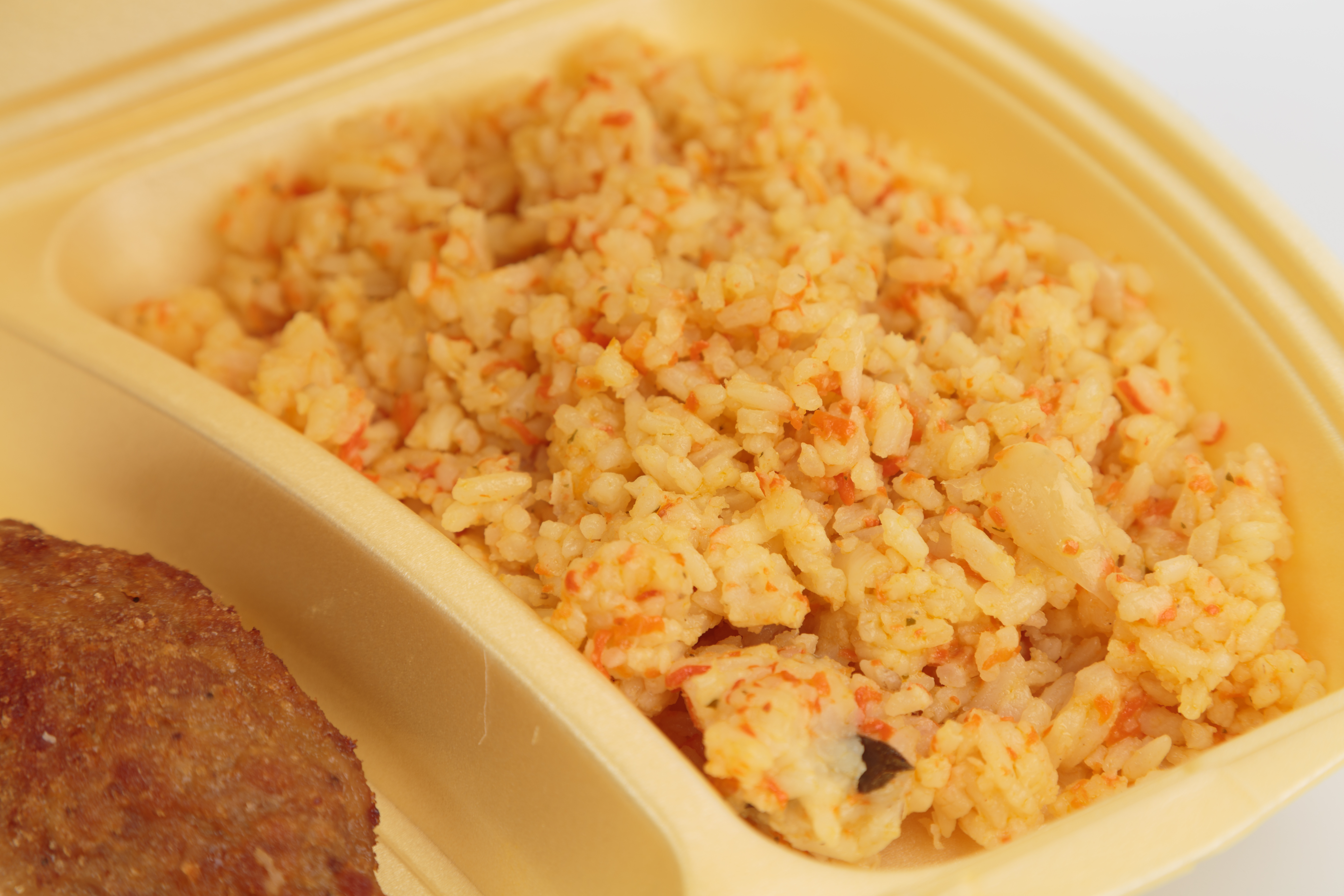
Convenient boxed rice pilafs, risottos, or pasta side dishes are pantry staples for many households, but they can come with a sodium price tag. Many of these mixes rely heavily on salt-packed seasoning packets to add flavor, resulting in sodium counts of 500 to 800 mg—or more—per serving. What’s even more misleading is that a box often contains multiple servings, and it's easy to eat the whole thing in one sitting, doubling or tripling your sodium intake. Sodium-based additives like monosodium glutamate (MSG) or disodium inosinate are also commonly used for flavor enhancement. To avoid these hidden sodium traps, cook plain rice or pasta and use fresh herbs, garlic, or a splash of citrus for flavor. You'll not only cut the salt but also skip unnecessary preservatives while still enjoying a flavorful side dish.
31. Baking Powder and Baking Soda (in Baked Goods)

When it comes to baked goods, we often focus on sugar and fat—but sodium quietly sneaks in through leavening agents like baking powder and baking soda. These essential ingredients help baked items rise, but they’re also hidden sources of sodium that can add up quickly. Store-bought muffins, biscuits, pancakes, and cakes may not taste salty, yet they can contain hundreds of milligrams of sodium per serving. Even homemade treats can pack a sodium punch if standard leaveners are used. A single teaspoon of baking soda contains over 1,200 mg of sodium! To cut back, look for low-sodium or sodium-free baking powder (often made with cream of tartar), and measure carefully when baking. You can also experiment with recipes that use natural leavening from ingredients like yogurt or buttermilk combined with acid-based baking powders. A little ingredient awareness can go a long way in making your baked favorites more heart-friendly.
32. Cornbread and Savory Muffins
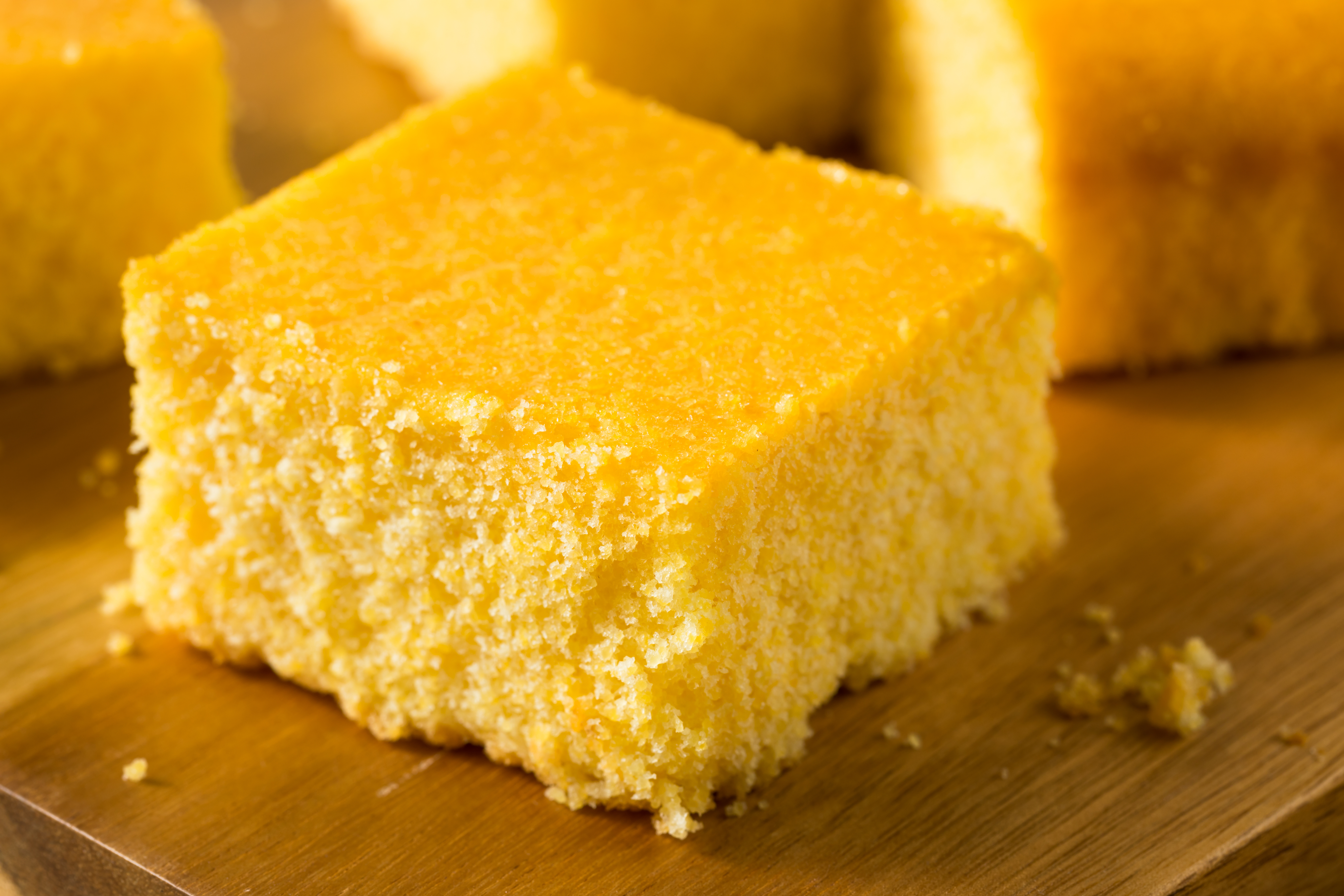
Cornbread might be a nostalgic comfort food or a go-to side for chili and BBQ, but it’s often a hidden sodium bomb. Many boxed cornbread mixes contain both added salt and sodium-laden leavening agents, pushing the sodium content to 300–500 mg per serving—or more if you top it with salted butter. Savory muffins like those made with cheese, bacon bits, or herbs often contain even more sodium thanks to their flavorful mix-ins. And let’s face it—most people eat more than one piece. To enjoy cornbread or savory muffins with less salt, try baking from scratch using low-sodium baking powder, unsalted butter, and limiting salty add-ins. Adding flavor through ingredients like chives, garlic, or a dash of chili powder instead of salt-heavy toppings can keep the taste without the sodium overload.
33. Chicken or Beef Broth (Even “Low-Sodium”)
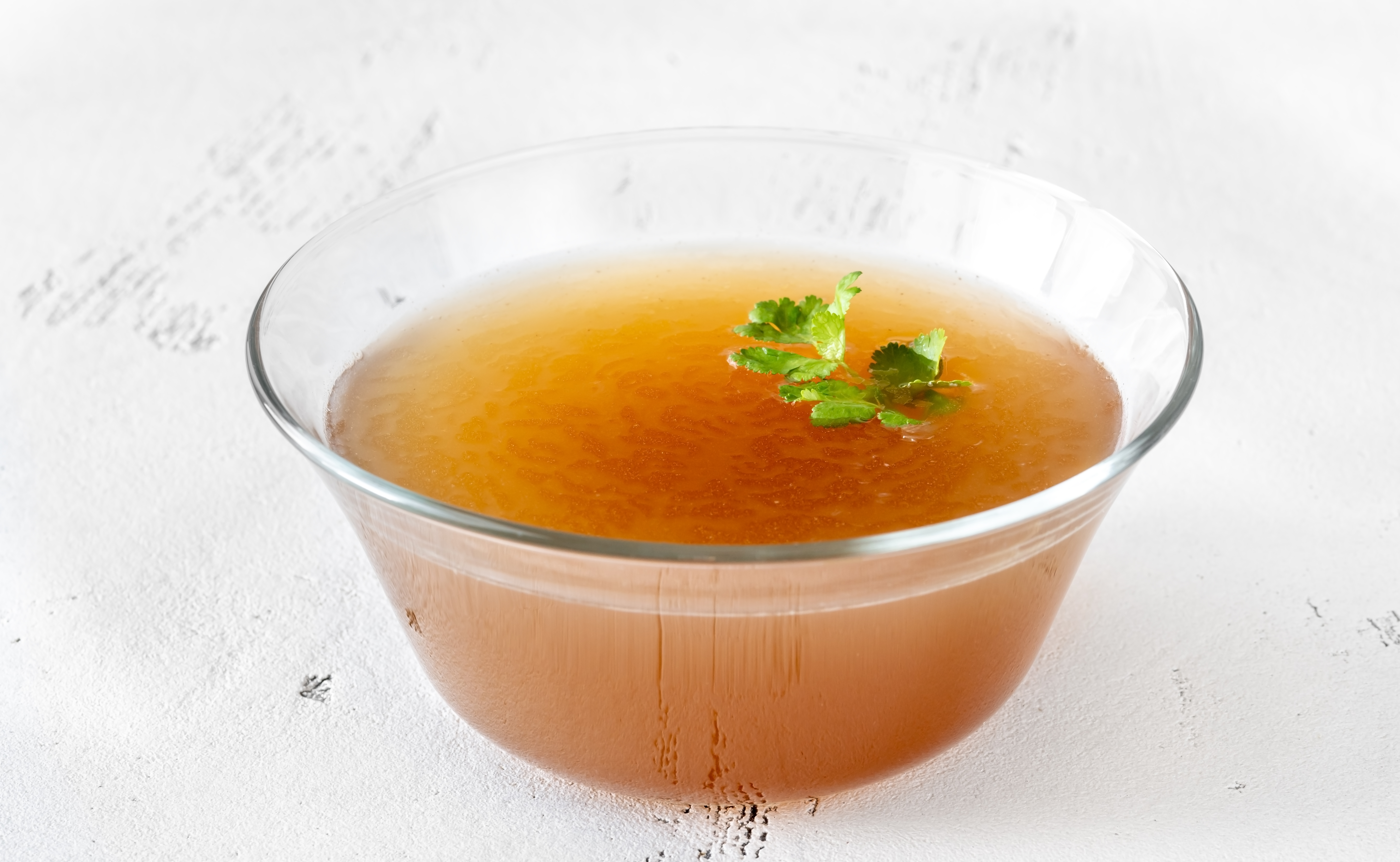
Store-bought broths and stocks are pantry staples, but even those labeled “low-sodium” can be deceptively salty. A typical “reduced sodium” chicken or beef broth still contains 400–500 mg of sodium per cup—and regular versions can top 800 mg. Since broths form the base for many soups, stews, risottos, and sauces, sodium can pile up quickly without you realizing it. Even bouillon cubes and concentrated stock pastes are packed with sodium, often exceeding 1,000 mg per serving. If you’re watching your salt intake, look for “no salt added” varieties—these offer a blank slate so you can season to your taste. Better yet, consider making your own broth using vegetable scraps, bones, herbs, and no added salt. Homemade stock not only gives you more control over the sodium content but also adds deeper, fresher flavor to your dishes.
34. Pre-Made Smoothies
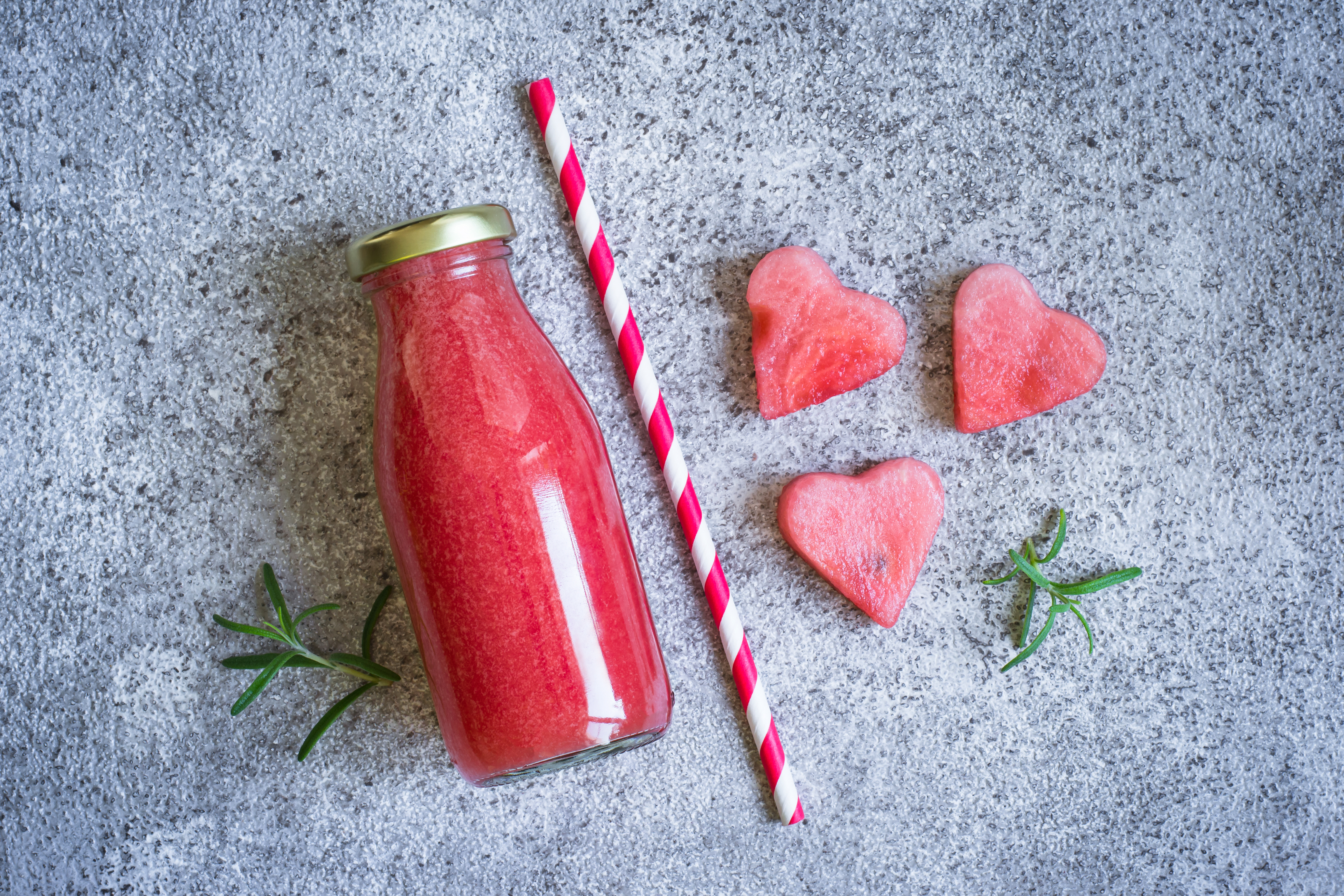
Pre-packaged smoothies often wear a health halo thanks to their fruity appearance and vitamin claims, but many contain more sodium than expected. Popular smoothie brands frequently use juice concentrates, protein powders, nut butters, and flavor enhancers—all of which can drive up the sodium content to 200–300 mg or more per bottle. Some varieties marketed as “meal replacements” or “post-workout” drinks include even more sodium to mimic the effect of sports drinks. If you’re sipping smoothies daily as part of your wellness routine, that sodium adds up fast. A smarter option? Make your own at home with whole fruits, unsweetened plant-based milk, and a touch of plain yogurt or chia seeds. That way, you can skip the additives and preservatives—and keep your sodium levels in check without sacrificing flavor or nutrition.
35. Flavored Nuts and Trail Mixes
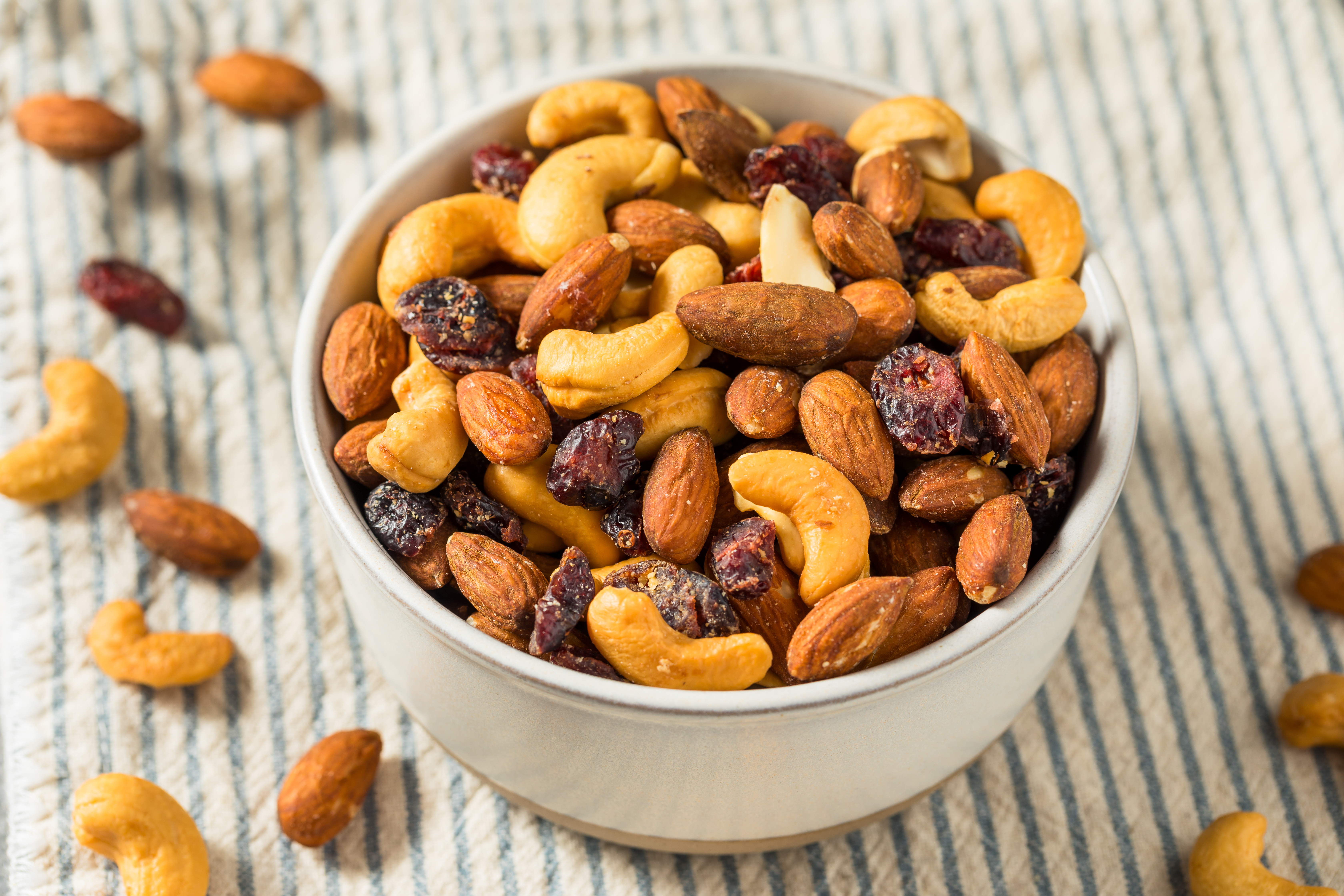
Nuts are widely praised for their heart-healthy fats and protein, but when they’re roasted with flavorings like BBQ, salt and vinegar, ranch, or “smokehouse” seasoning, they can become surprisingly high in sodium. A single handful of flavored nuts may contain 200–300 mg of sodium—or more if you keep grabbing more than one serving. The same goes for trail mixes that include salted nuts, pretzels, seasoned corn chips, or chocolate-coated pieces. What seems like a nutritious on-the-go snack can quickly become a sodium overload. To snack smarter, opt for raw or dry-roasted unsalted nuts and build your own trail mix at home. Combine unsalted almonds, walnuts, dried fruit, pumpkin seeds, and even a few dark chocolate chips for a satisfying, lower-sodium snack that fuels your body without burdening your kidneys or heart.
36. Frozen Waffles and Pancakes
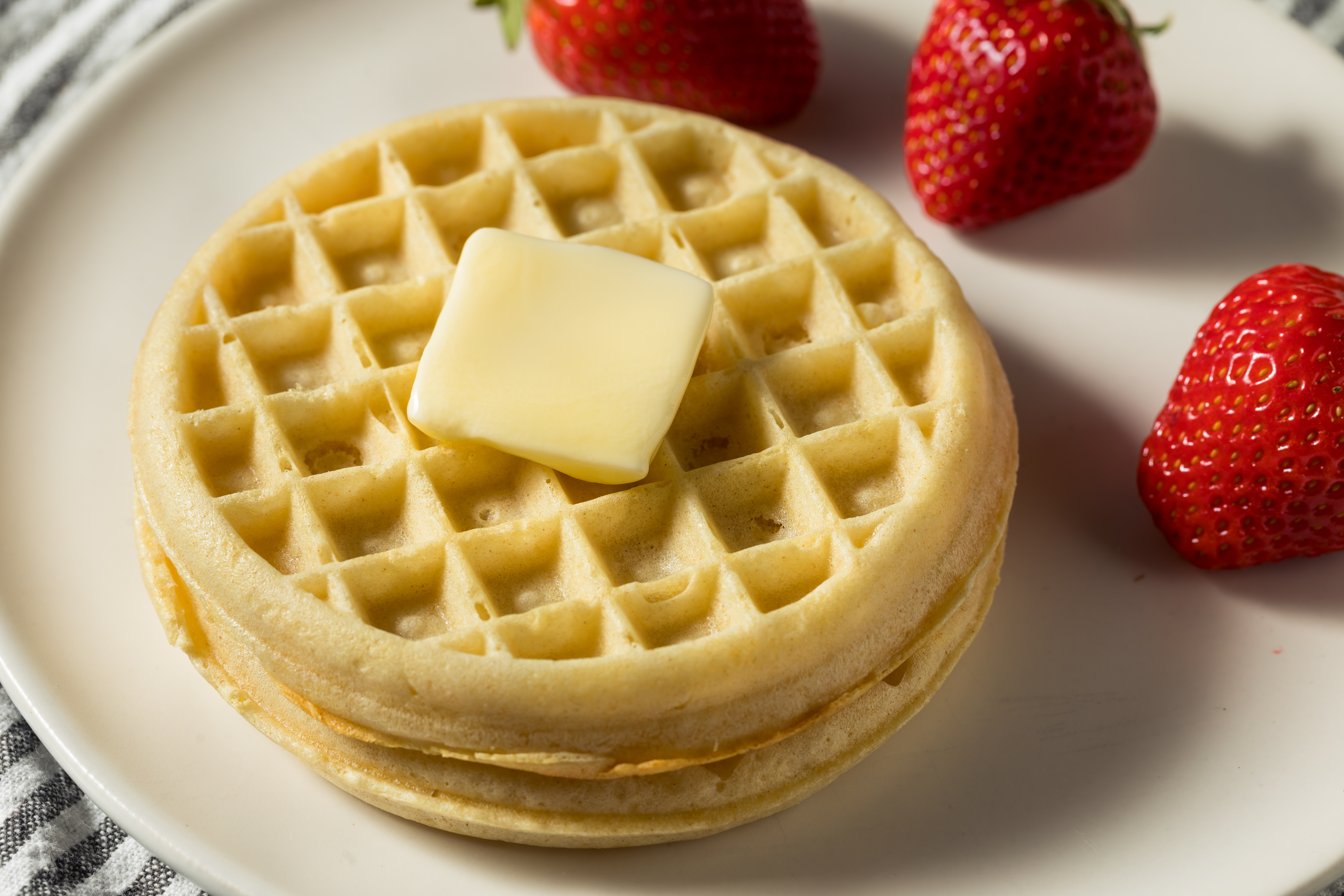
That quick, convenient breakfast from the freezer might pack an unexpected sodium punch before you even reach for syrup. Many popular brands of frozen waffles and pancakes contain 300-400 mg of sodium per serving (often just two pieces!) due to leavening agents and salt added for flavor and texture. It’s an easy way to start your day close to 20% of your daily sodium limit without realizing it. Consider making large batches of homemade versions on weekends and freezing them for a lower-sodium weekday breakfast you control.
37. Pizza (Frozen or Takeout)
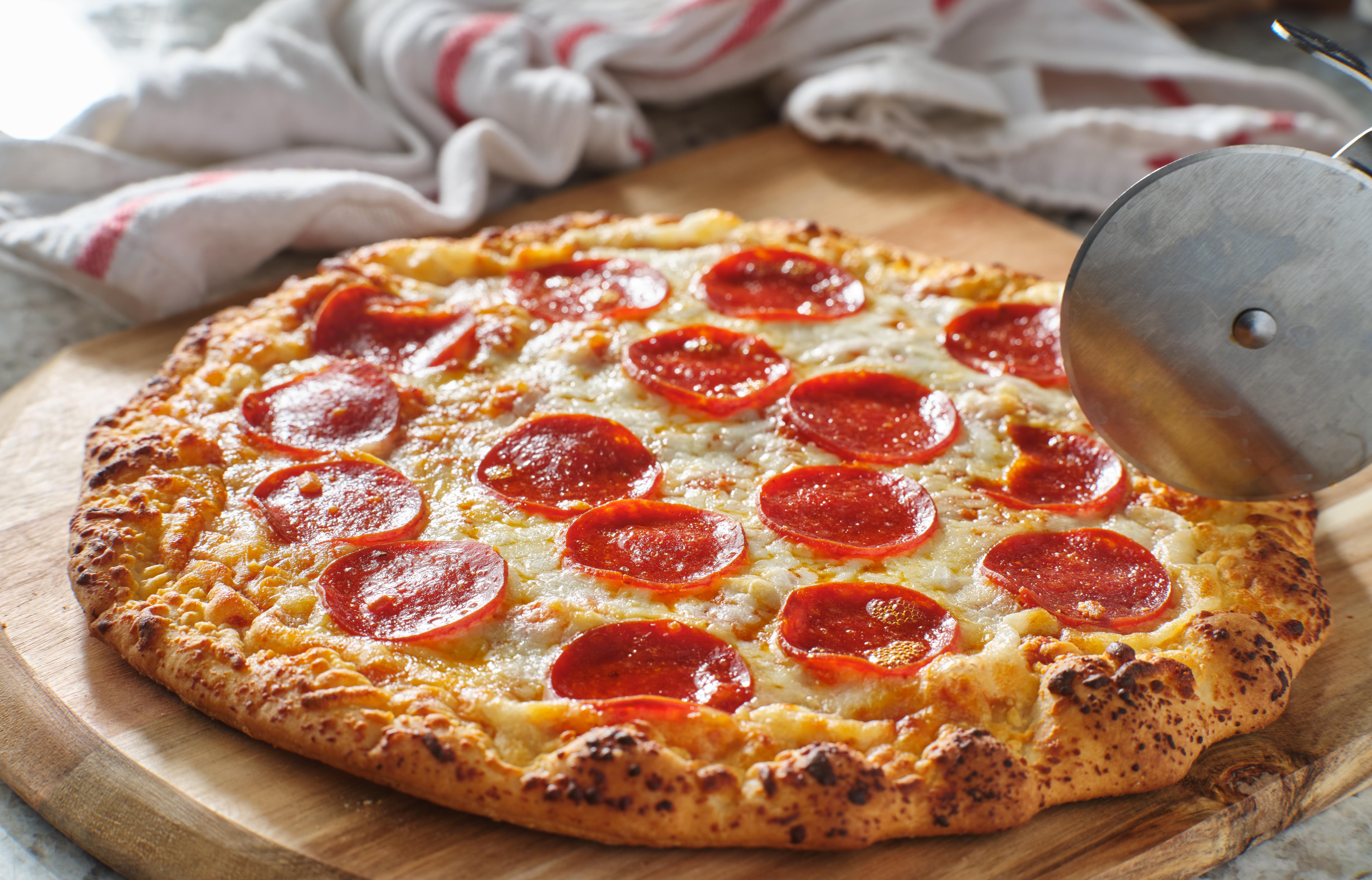
Everyone knows pizza can be salty, but it’s the synergy of high-sodium ingredients that makes it extreme. The crust often has significant salt, layered with salty tomato sauce, processed cheese (like mozzarella), and toppings like pepperoni, sausage, or olives, each adding another hit. A single slice can easily contain 600-1000+ mg of sodium. Eating several slices can demolish your daily sodium allowance in one sitting. Choosing veggie toppings, asking for less cheese, or making pizza at home offers much better control.
38. Bottled Marinades
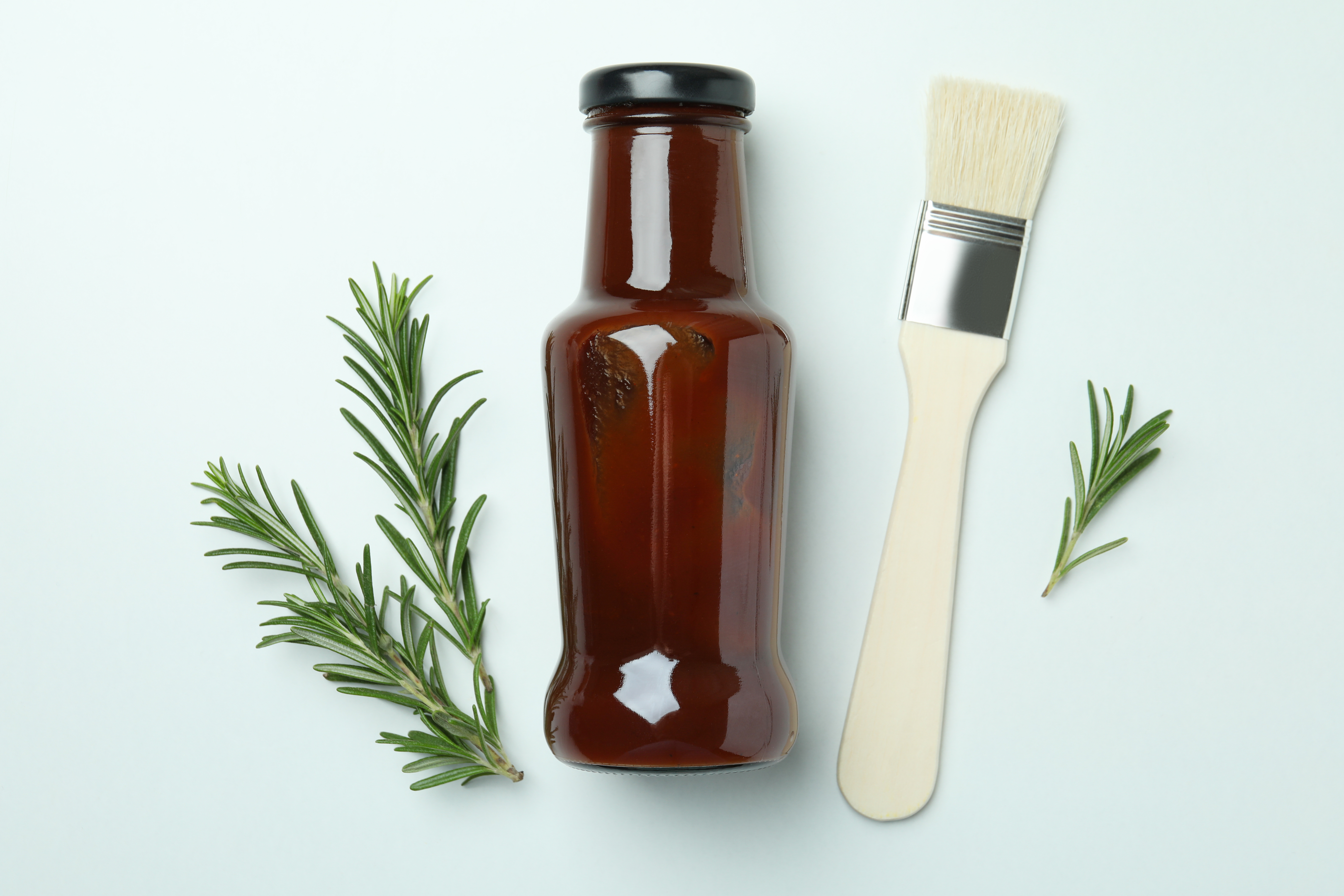
Looking to infuse flavor into meat or plant proteins quickly? Bottled marinades are convenient but often loaded with sodium. Ingredients like soy sauce, salt, and various flavor enhancers are used liberally for taste and preservation. Just two tablespoons of a typical teriyaki, BBQ, or steak marinade can contain 300-600 mg of sodium or more, which gets absorbed deeply into the food during marination. Whipping up your own marinade with citrus, vinegar, herbs, garlic, and minimal low-sodium soy sauce is a much healthier approach.
39. Canned Fish (in Brine)

Canned tuna, sardines, or salmon seem like healthy pantry staples, but check how they're packed. Fish packed in brine (saltwater) absorbs a significant amount of sodium during processing. A small can might contain 300-500 mg of sodium per serving – a hidden salt source in your quick lunch salad or sandwich. While rinsing helps remove some surface salt, much is already absorbed. Always look for options packed in water or oil with "no salt added" or "low sodium" clearly stated on the label.
40. Flavored Yogurt Cups
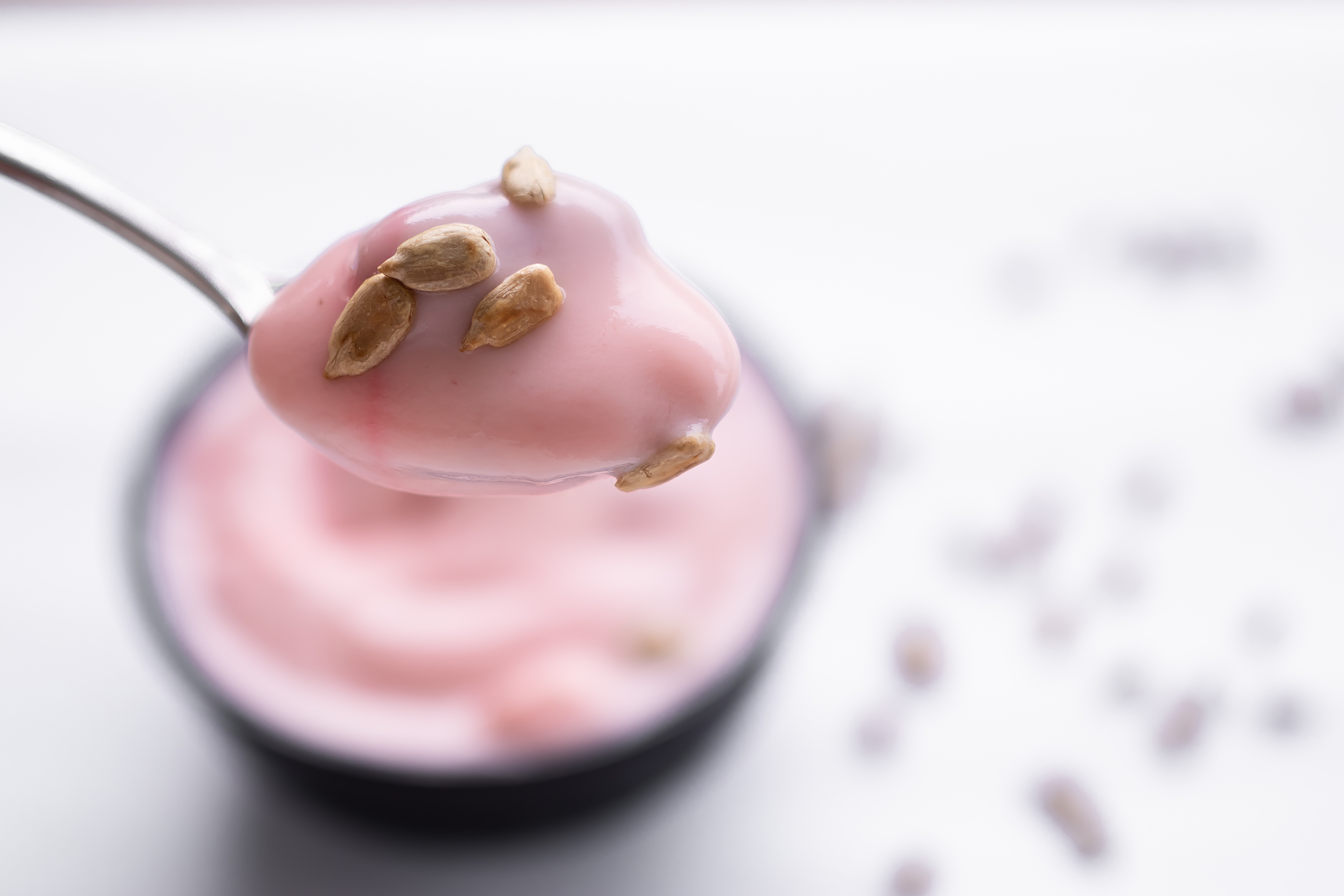
Yogurt is generally healthy, but veer away from plain varieties, and sodium can make a surprise appearance. While usually not excessively high, some single-serving flavored yogurts, especially those mimicking desserts (like cheesecake or pie flavors) or savory blends, can contain 100-150 mg of sodium per cup. It’s unexpected sodium in a typically sweet or neutral snack. Sticking to plain yogurt and adding your own fresh fruit, honey, or spices keeps the sodium naturally low and avoids unnecessary additives.
41. Instant Pudding Mixes
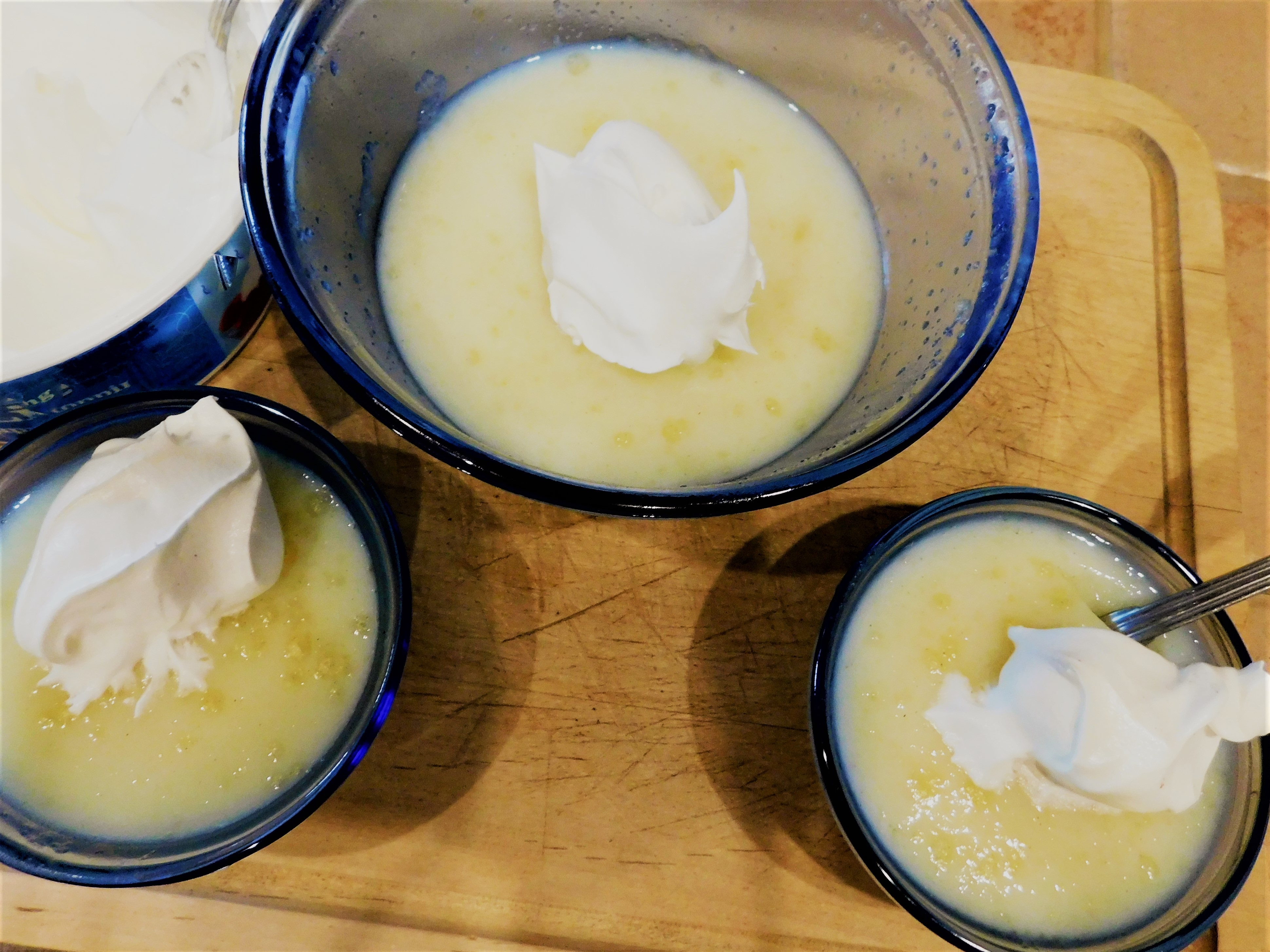
That quick, creamy dessert mix often relies on more than just sugar for its appeal. Instant pudding mixes frequently use sodium phosphate compounds as thickening agents and stabilizers, significantly boosting the sodium content. A single serving prepared from a standard mix can easily pack 300-400 mg of sodium, even before considering the milk used. It's a surprising salty hit for a sweet treat. Making pudding from scratch using cornstarch gives you full control over the sodium level.
42. Taco Seasoning Packets

Those convenient pre-blended taco seasoning packets are sodium bombs. Salt is often the primary ingredient, and a single packet designed for a pound of ground meat can contain a staggering 1500-2500 mg of sodium or more. This easily turns lean protein or beans into a high-sodium meal component, often exceeding an entire day's recommended intake just from the seasoning. Mixing your own blend with chili powder, cumin, paprika, garlic, and onion powder lets you control the salt entirely.
43. Boxed Macaroni & Cheese
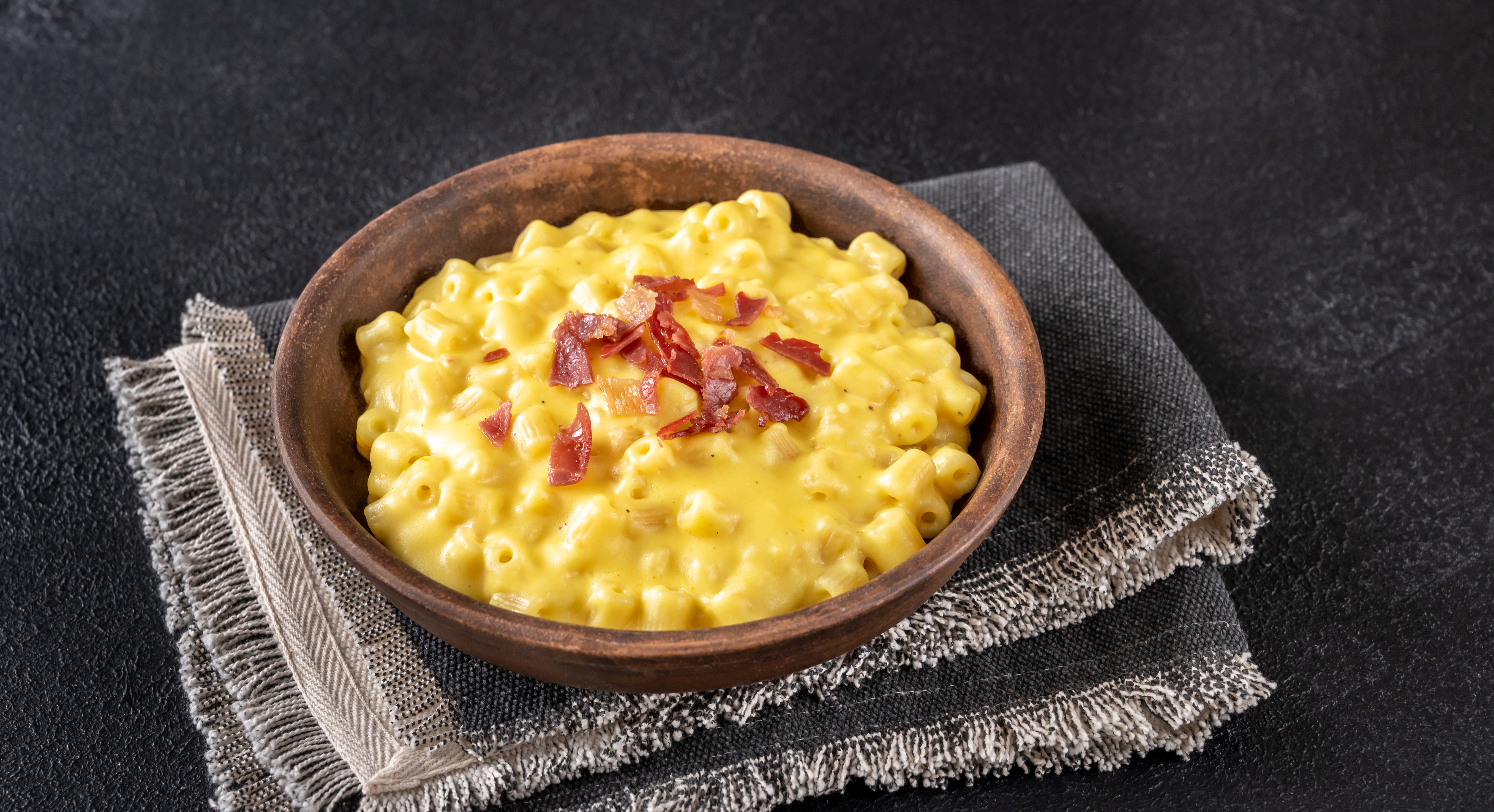
A beloved comfort food and pantry staple, boxed mac & cheese gets its intense cheesy flavor and shelf stability from significant amounts of sodium in the powdered cheese sauce mix. Salt, sodium phosphates, and other sodium-containing flavor enhancers are key ingredients. A standard prepared serving often contains 600-800 mg of sodium, making it a major contributor, especially for children who might eat larger portions. Homemade versions allow for much better sodium control.
44. Canned Pasta Meals (e.g., SpaghettiOs)
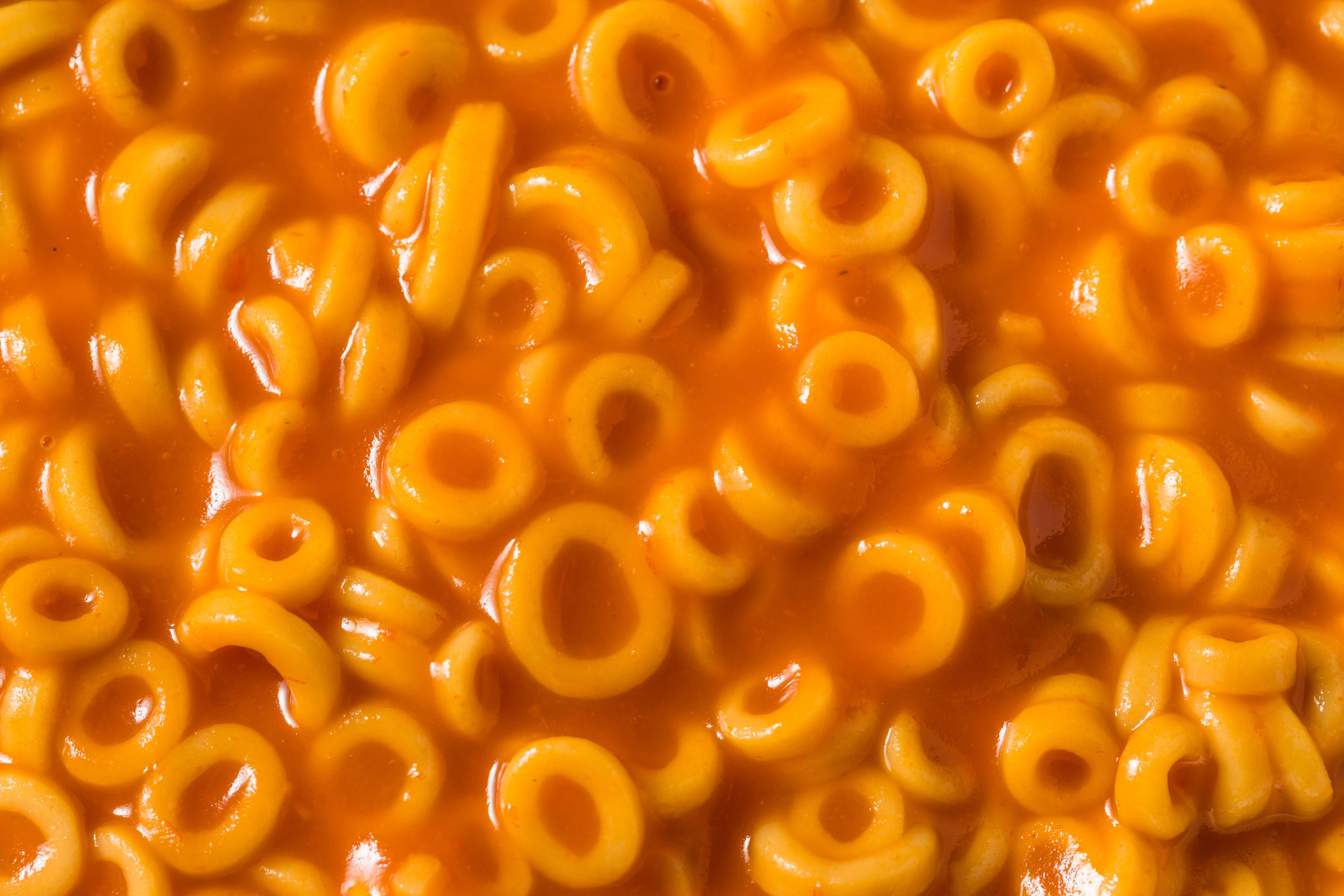
Ready-to-eat canned pasta meals, popular for their convenience, especially with kids, are frequently high in sodium. Products like SpaghettiOs, canned ravioli, or other pasta shapes in tomato sauce rely heavily on salt for flavor preservation in the sauce. A single can typically contains 600-900 mg of sodium, sometimes more. Regularly consuming these adds substantial, often unnoticed, sodium to the diet. Opting for plain pasta with low-sodium sauce is a far healthier alternative.
45. Olives
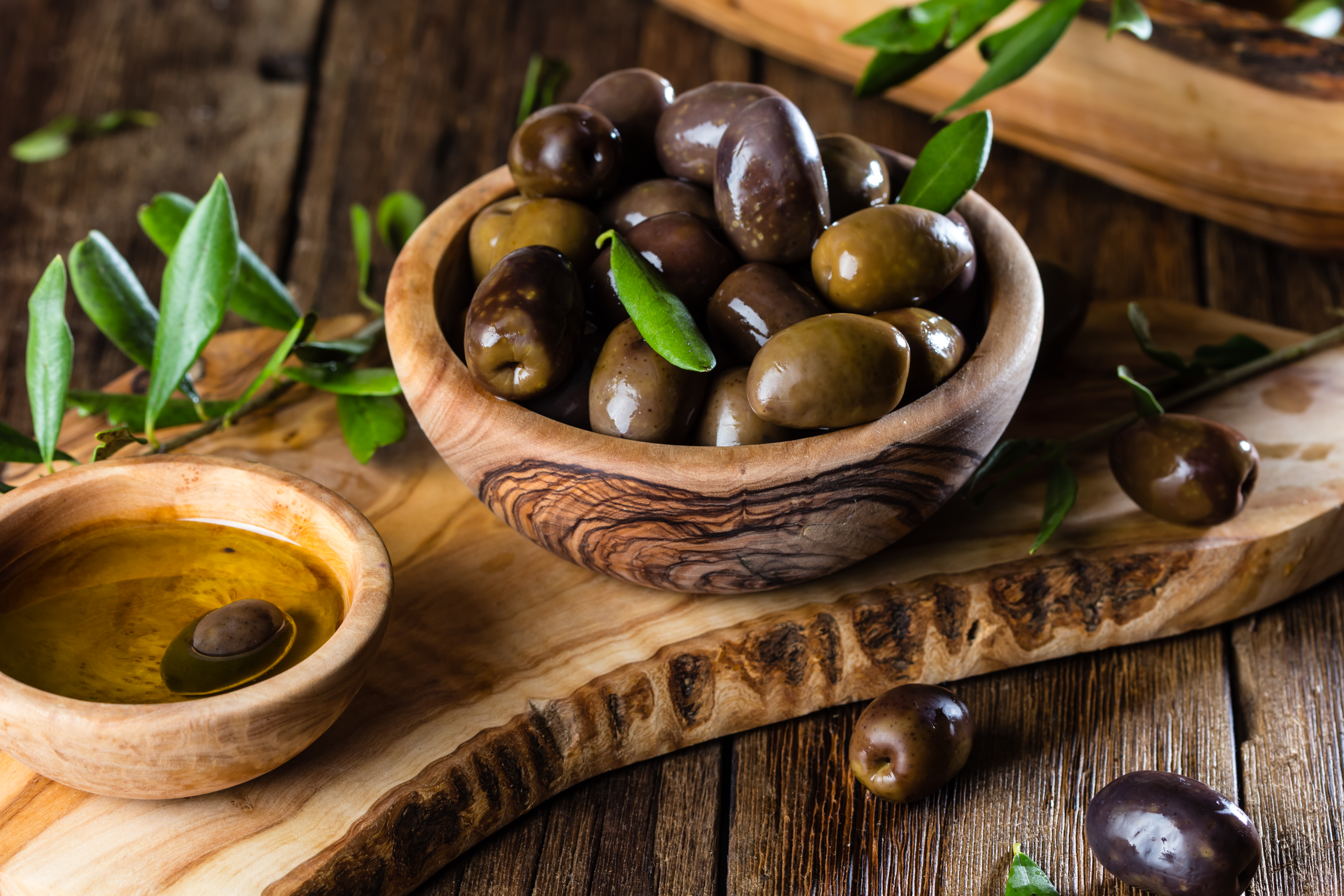
Celebrated for healthy fats, olives are nearly always cured in a salty brine to make them palatable and preserve them. This process infuses them with significant sodium. Just five or six medium olives can contribute 150-300 mg of sodium, and it's easy to eat many more when snacking or adding them to dishes like salads or pizzas. While olives offer nutritional benefits, their sodium content necessitates moderation. Rinsing them under water before eating can help remove some surface salt.
Navigating the Sodium Minefield

Navigating the sodium minefield in everyday foods requires awareness and informed choices. While salt is an essential nutrient, excessive consumption poses significant health risks, including hypertension and cardiovascular diseases. By understanding the hidden sources of sodium in our diets, we can take proactive steps to reduce our intake and improve our overall health. This means reading labels carefully, choosing low-sodium alternatives, and preparing meals at home where possible. By making small changes to our dietary habits, we can enjoy the flavors we love without compromising our health. Remember, the key is moderation and mindfulness in every bite.
